These Surreal Animals Look Like They Escaped From a Dream
05 Mar 2025The animal kingdom is full of strange and wonderful creatures but some are so bizarre-looking that they seem like they belong in a science fiction movie rather than on Earth. Some of these animals have only been discovered recently, leaving scientists baffled by their unique traits. Whether it's their bizarre survival mechanisms or their almost mythical appearances, these creatures prove that life on Earth is far more diverse and fantastical than we often realize. Here are 50 of the weirdest land animals that you won’t believe actually exist.
Aye-Aye
A nocturnal lemur from Madagascar, the aye-aye is famous for its spindly fingers, particularly the elongated middle finger, which it uses to extract grubs from trees. With large, beady eyes, bat-like ears, and rodent-like teeth that never stop growing, the aye-aye has often been mistaken for a mythical creature.
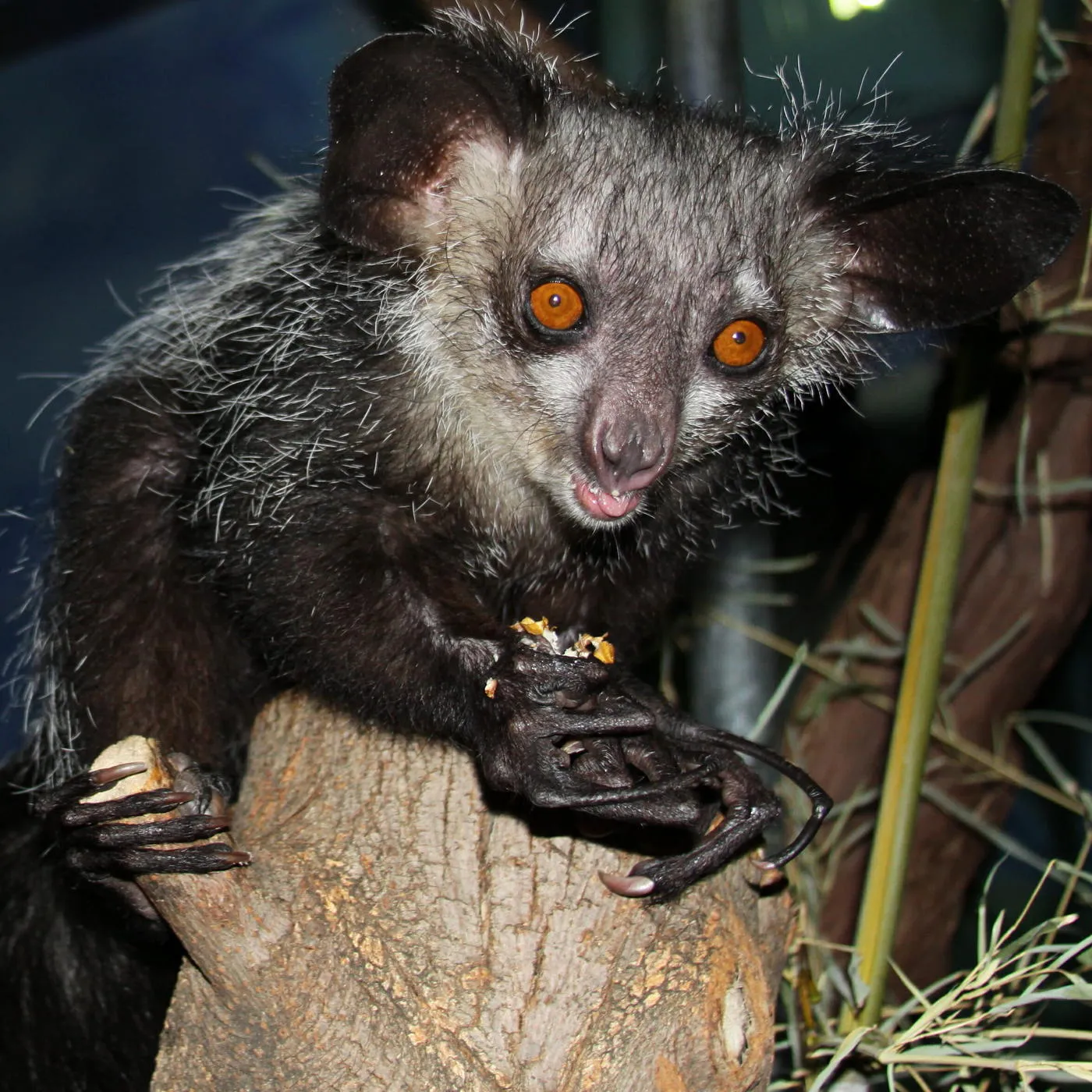
@Original-Plate-4373/reddit.com
In Malagasy folklore, it's considered a harbinger of bad luck, leading to unnecessary persecution of this already endangered species. But in reality, it's an essential part of its ecosystem, controlling insect populations with its unique foraging method.
Star-Nosed Mole
With a face only a mother could love, this small mole from North America has 22 pink, fleshy, tentacle-like appendages around its snout. These "tentacles" are actually highly sensitive touch receptors, allowing the star-nosed mole to detect prey almost instantly—faster than any other mammal.
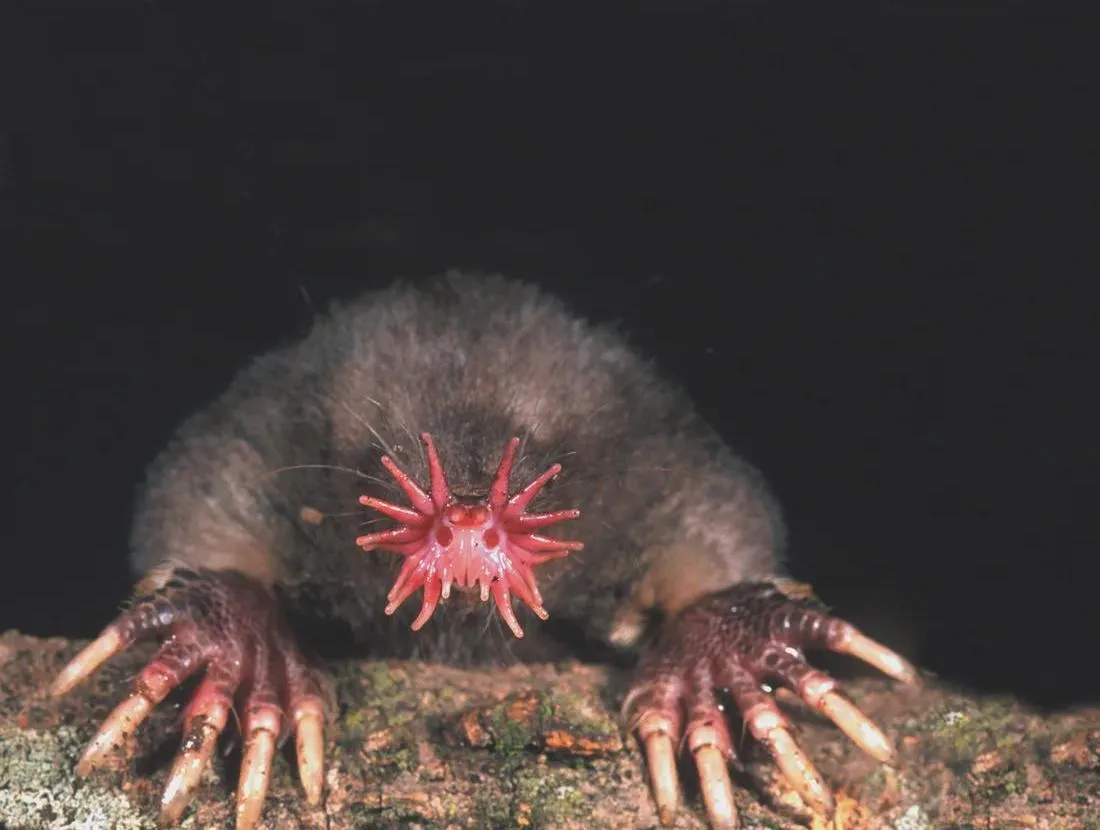
@ambianceambiance/reddit.com
Living underground in moist soil, it’s nearly blind, relying entirely on its starry snout to navigate and find food. Shockingly, this bizarre creature holds the record for the fastest eater in the animal kingdom, consuming insects and worms in a mere 120 milliseconds!
Saiga Antelope
This critically endangered antelope, native to Central Asia, looks like it walked straight out of an alien world. Its most distinctive feature? A massive, bulbous, downward-facing nose that acts as a natural air filter, helping it survive the harsh, dusty steppe environments.
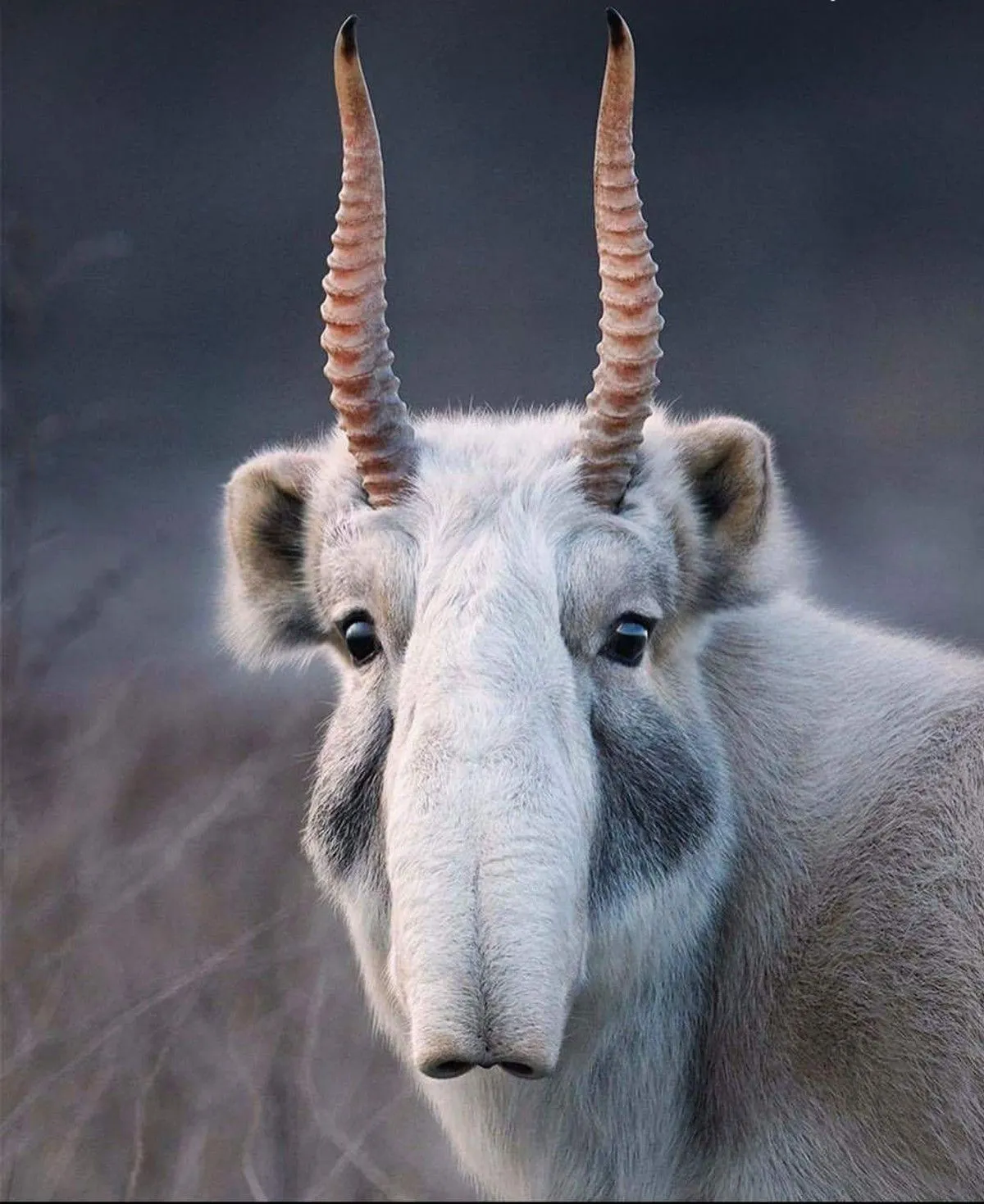
@HumanTimmy/reddit.com
During the summer, this strange-looking nose cools down the air before it reaches the lungs, while in winter, it warms up the freezing air. Once abundant, the saiga population has been decimated due to poaching and habitat loss, making conservation efforts more critical than ever.
Proboscis Monkey
This odd-looking primate from Borneo is best known for its unusually large, bulbous nose. The males have oversized noses that can grow up to 7 inches long! While the exact reason for their exaggerated schnoz isn’t fully understood, researchers believe it plays a role in attracting mates.
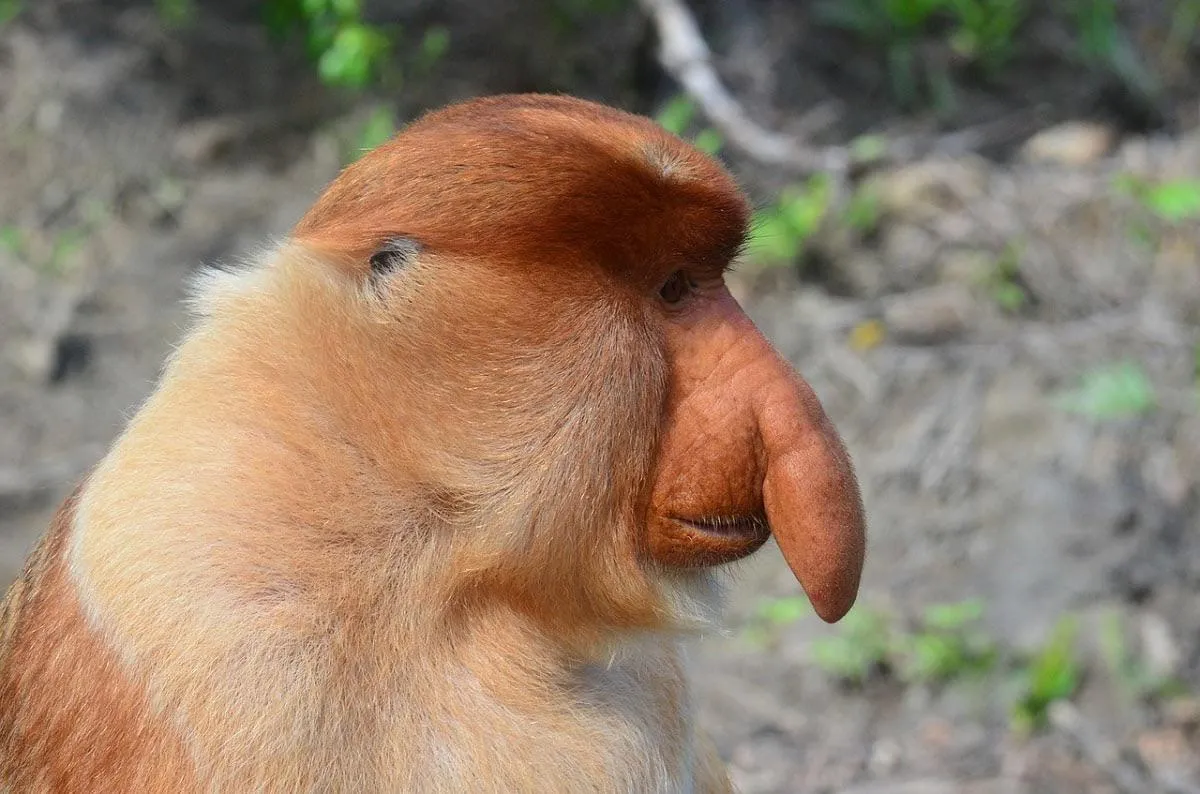
@catlover906/reddit.com
Female proboscis monkeys seem to prefer males with larger noses, possibly as a sign of strength and good health. Their potbellies, webbed feet, and comically human-like expressions make them one of the most peculiar primates on the planet.
Pangolin
Often mistaken for a reptile, the pangolin is actually a scaly mammal. Covered in tough, overlapping scales made of keratin, it looks like a walking pinecone. When threatened, it curls into a tight ball, making it nearly impossible for predators to attack.
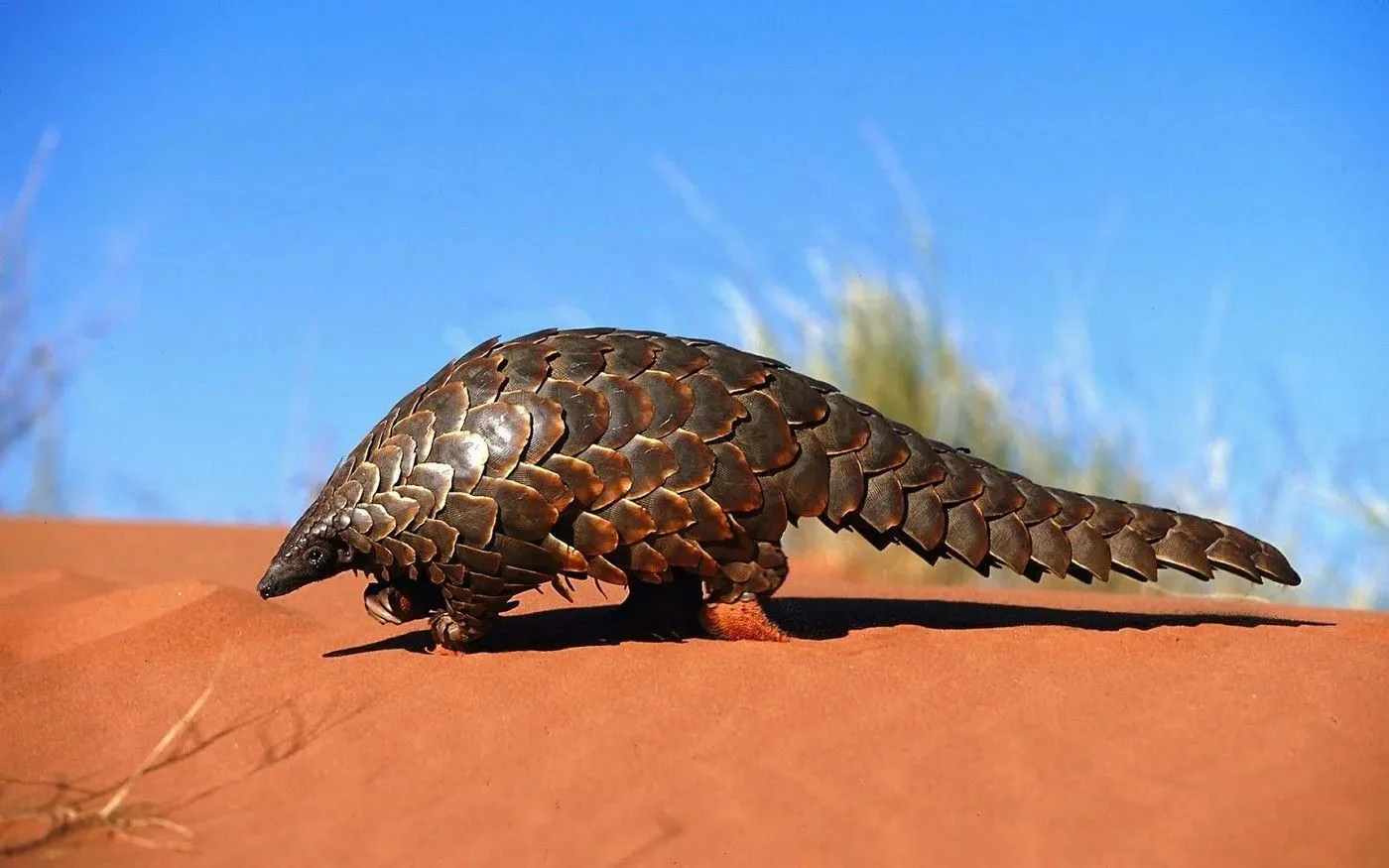
@minecraftsuggestions/reddit.com
These solitary creatures are adept climbers, using their strong tails to navigate treetops. Their highly specialized diet consists mainly of ants and termites, which they scoop up with their long, sticky tongues. Unfortunately, its unique appearance has made it a target for poachers, and it's now one of the most trafficked mammals in the world.
Maned Wolf
Looking like a bizarre cross between a fox and a deer, the maned wolf of South America is neither a fox nor a wolf but belongs to its own unique genus. Standing on long, stilt-like legs, this lanky canine is built for the tall grasslands of Brazil and Argentina.
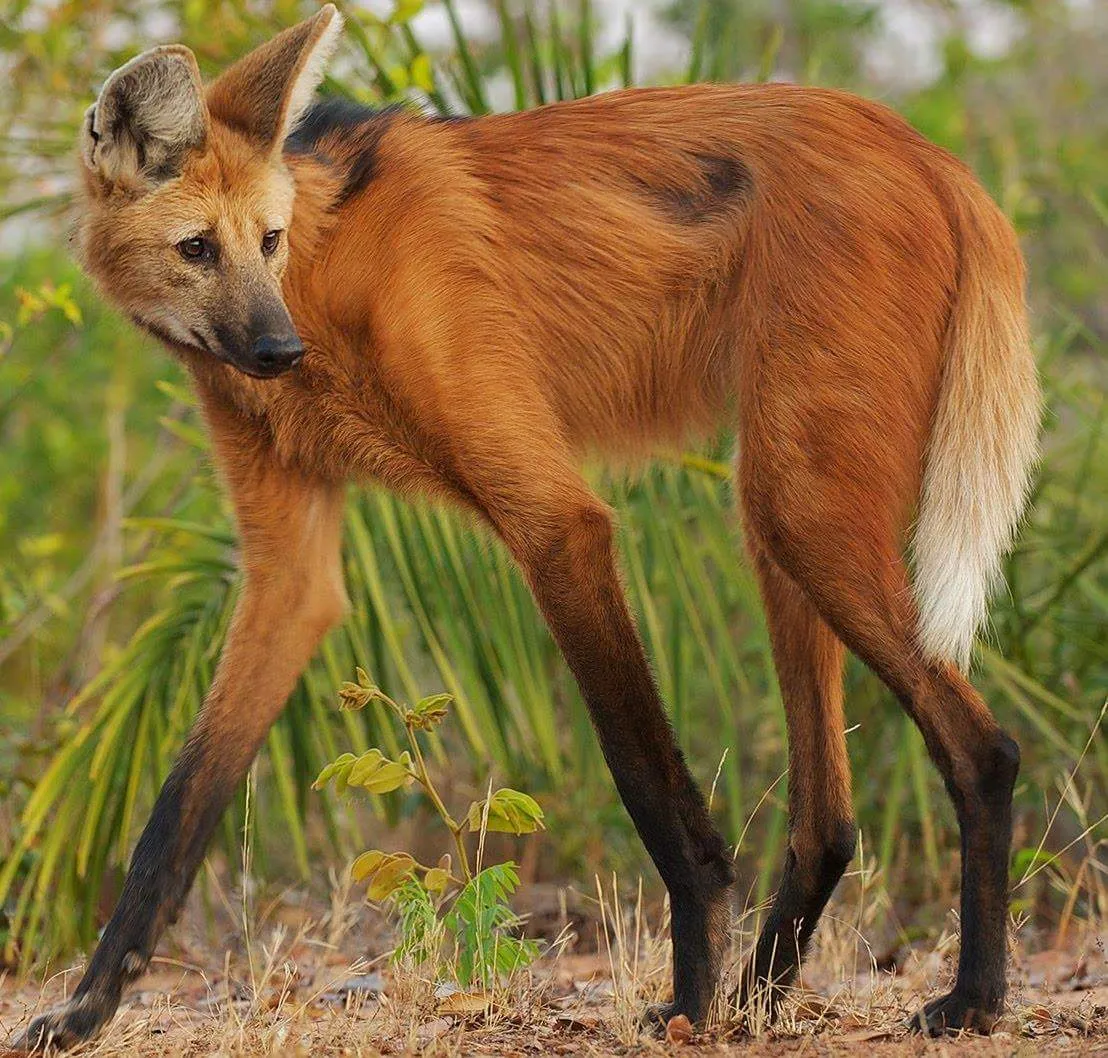
@shy_monster_1312/reddit.com
With a distinctive musky odor, often compared to cannabis, its scent-marking has led to several false police reports of marijuana fields! The maned wolf’s diet consists mostly of fruit, especially the "wolf apple," making it more of an omnivore than a true predator.
Jerboa
Imagine a rodent with the body of a tiny kangaroo and ears straight out of a cartoon. The jerboa, found in deserts across Asia and North Africa, has disproportionately long hind legs, allowing it to hop like a miniature marsupial. With gigantic, floppy ears, some species can hear predators approaching from great distances.
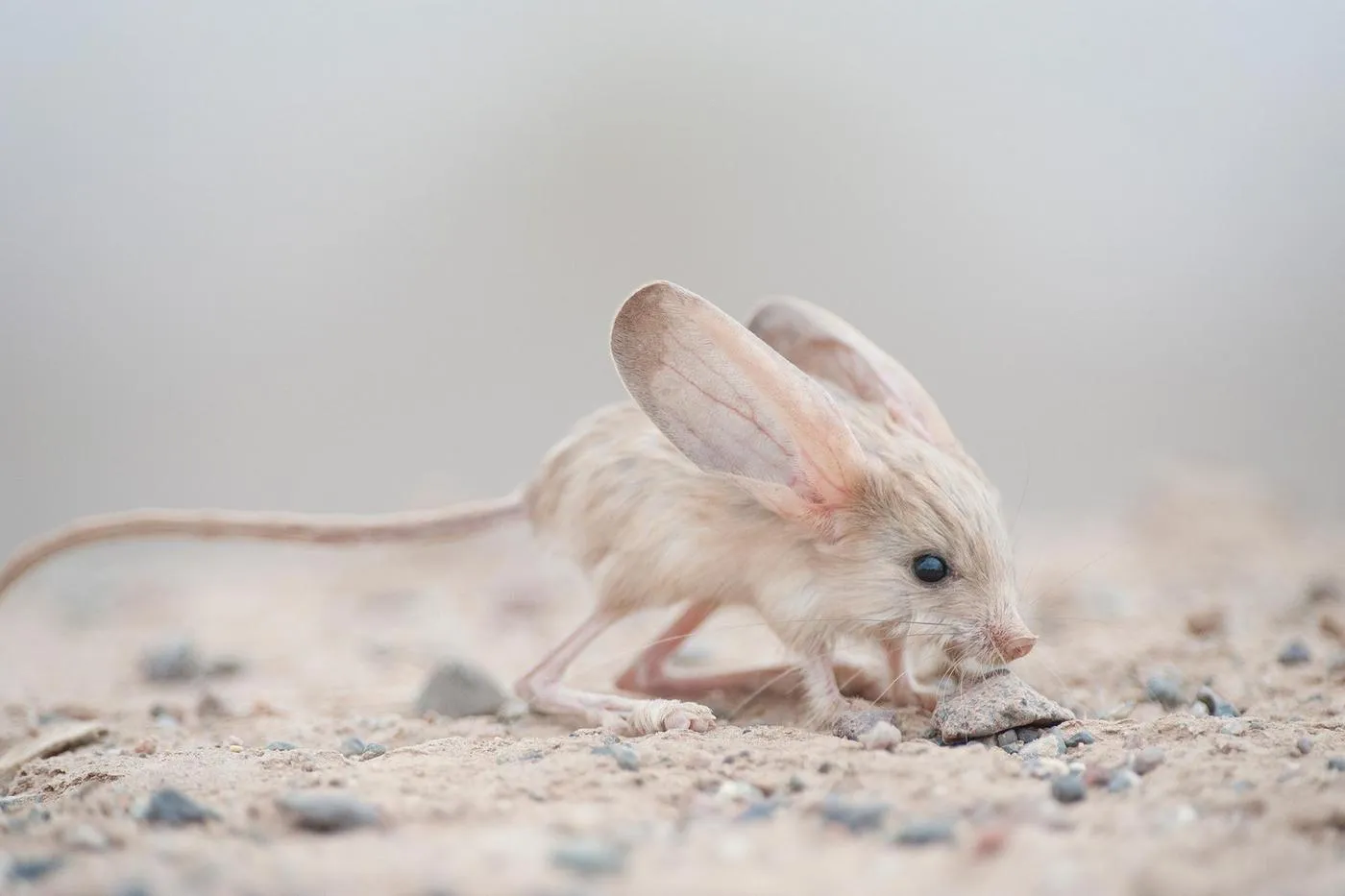
@Sapulinjing/reddit.com
At night, this adorable oddball bounces across the sand, using its tail for balance as it escapes danger with its lightning-fast jumps. Despite its small size, the jerboa can leap distances up to ten times its body length, making it a master of desert acrobatics. It rarely drinks water, getting most of its hydration from the food it eats, a crucial adaptation for surviving in arid environments.
Fossa
A close relative of the mongoose, the fossa is Madagascar’s top predator, resembling a strange hybrid between a big cat and a weasel. Agile and powerful, it can chase lemurs through the treetops with incredible speed. Despite its cat-like appearance, the fossa is more closely related to civets.
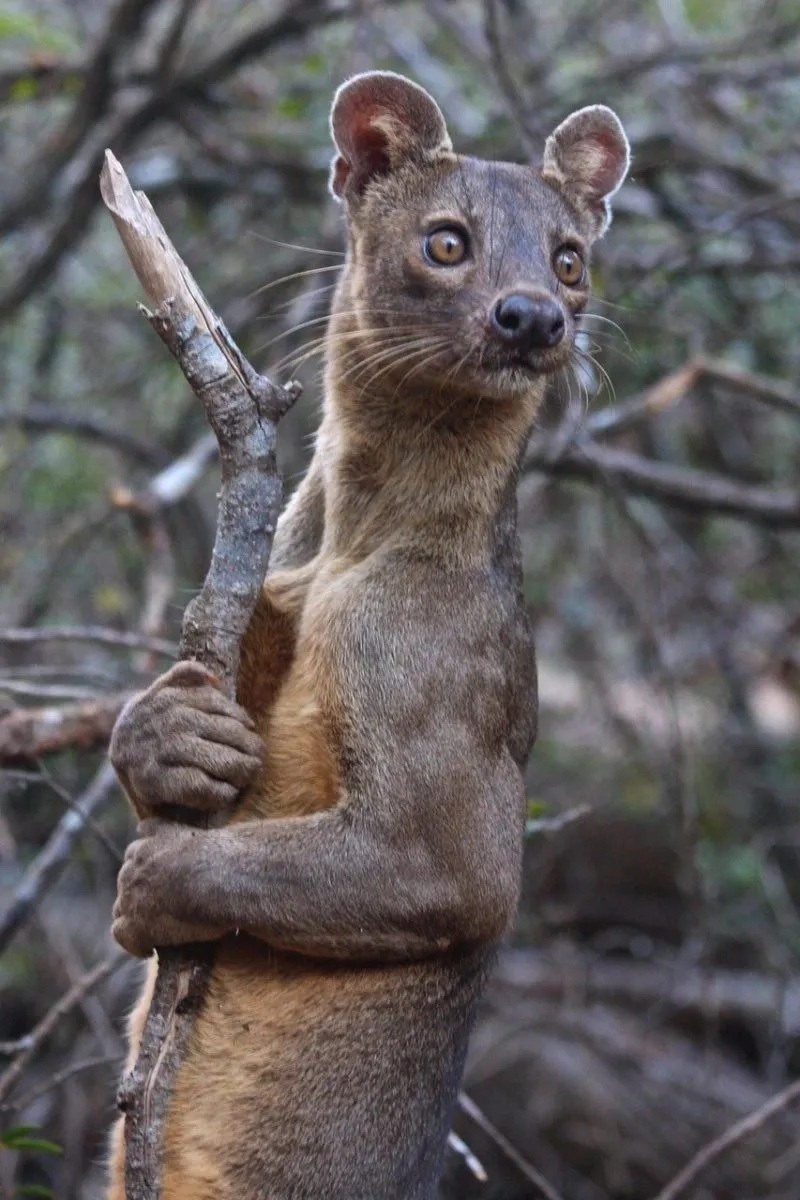
@detrevnisiemit/reddit.com
It has retractable claws, making it a formidable hunter that dominates the island’s food chain. Its eerie, ghostly vocalizations add to its mysterious reputation in the Malagasy forests. Unfortunately, deforestation and habitat loss threaten the fossa’s survival, making conservation efforts increasingly urgent.
Shoebill Stork
Standing over four feet tall, the shoebill stork looks like something out of a prehistoric world. Native to the swamps of central Africa, this bird gets its name from its massive, shoe-shaped bill, which it uses to catch fish, frogs, and even baby crocodiles! Its piercing stare and slow, deliberate movements make it appear almost animatronic.
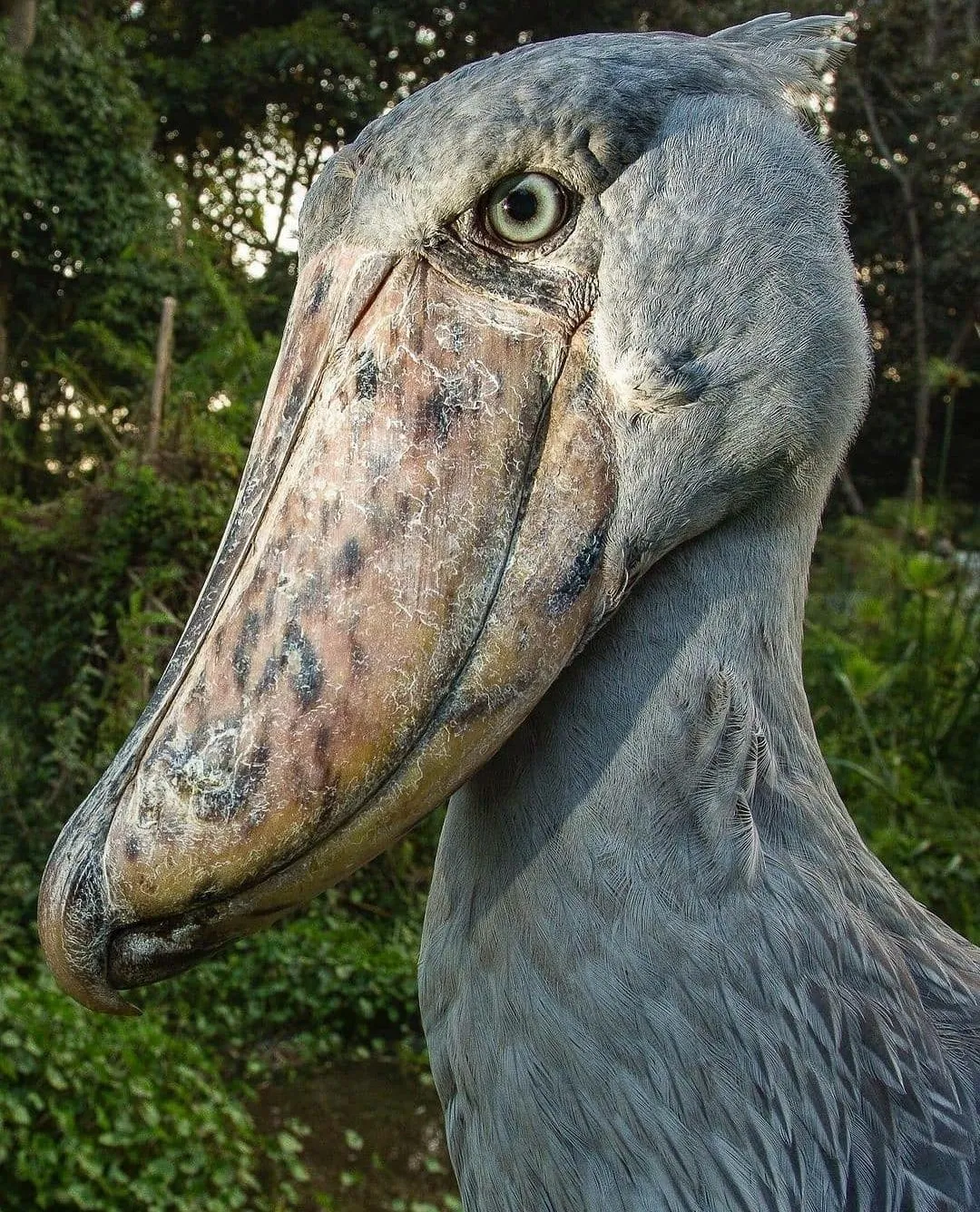
@trichrometripper/reddit.com
Unlike most birds, the shoebill is known for its eerie, bill-clattering sound, often compared to a machine gun. This strange and imposing bird also has an odd habit of bowing to humans in what appears to be a gesture of respect or curiosity.
Okapi
A rare and elusive relative of the giraffe, the okapi looks like a bizarre mix of animals. With the body of a horse, the face of a giraffe, and legs covered in zebra-like stripes, it’s no wonder this creature remained undiscovered by science until the early 20th century.
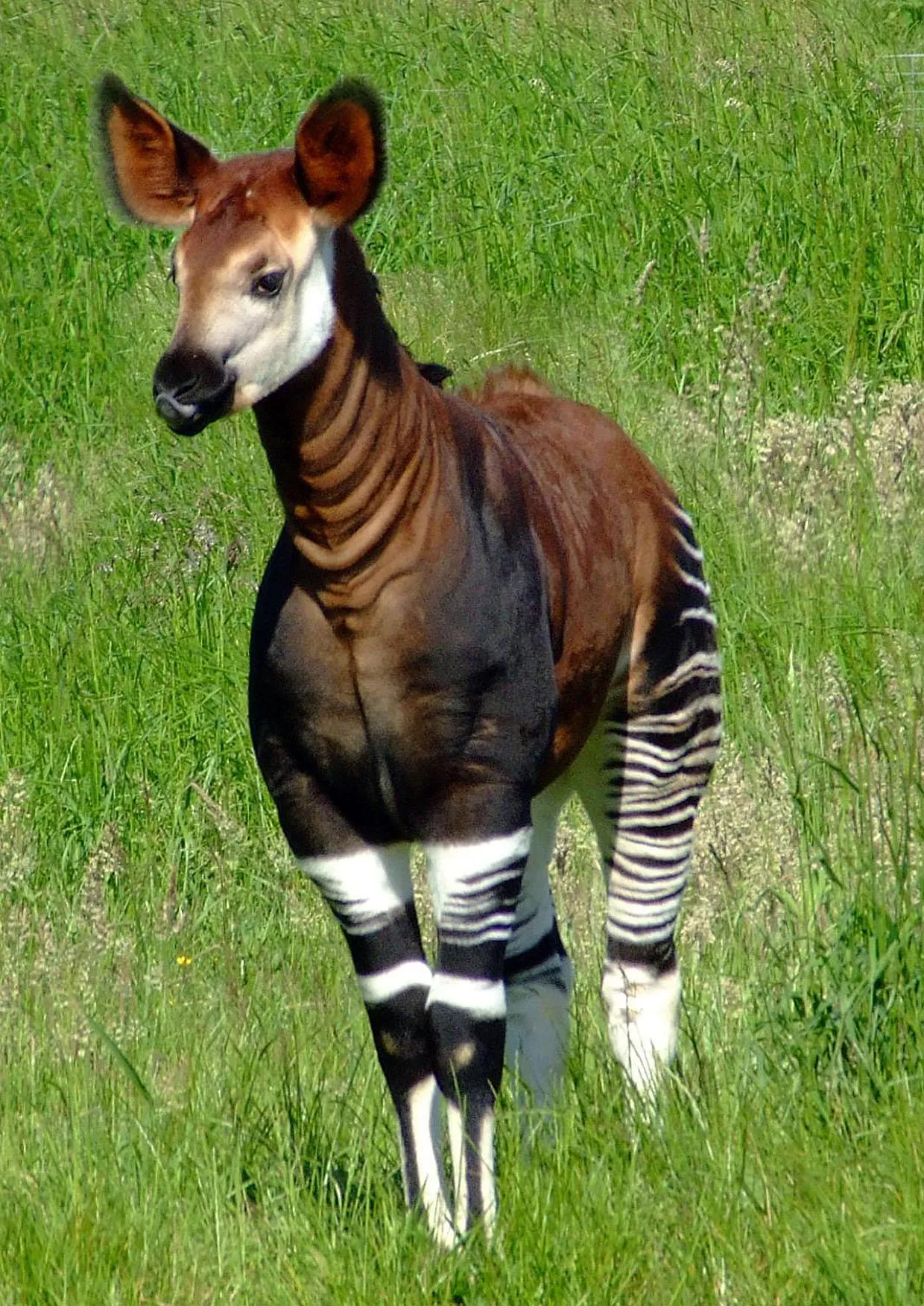
@crystalwoke/reddit.com
Found only in the dense rainforests of the Democratic Republic of Congo, the okapi is a master of camouflage. Its long, purple tongue is prehensile, allowing it to strip leaves from trees with precision. Despite being closely related to giraffes, okapis are solitary and rarely seen in the wild.
Sunda Colugo
Also known as the Malayan flying lemur, the Sunda colugo is not actually a lemur and doesn’t truly fly. Instead, it glides between trees using a special membrane that stretches from its neck to the tips of its fingers, toes, and tail. This nocturnal creature can glide over 300 feet in a single jump, effortlessly navigating the dense forests of Southeast Asia.
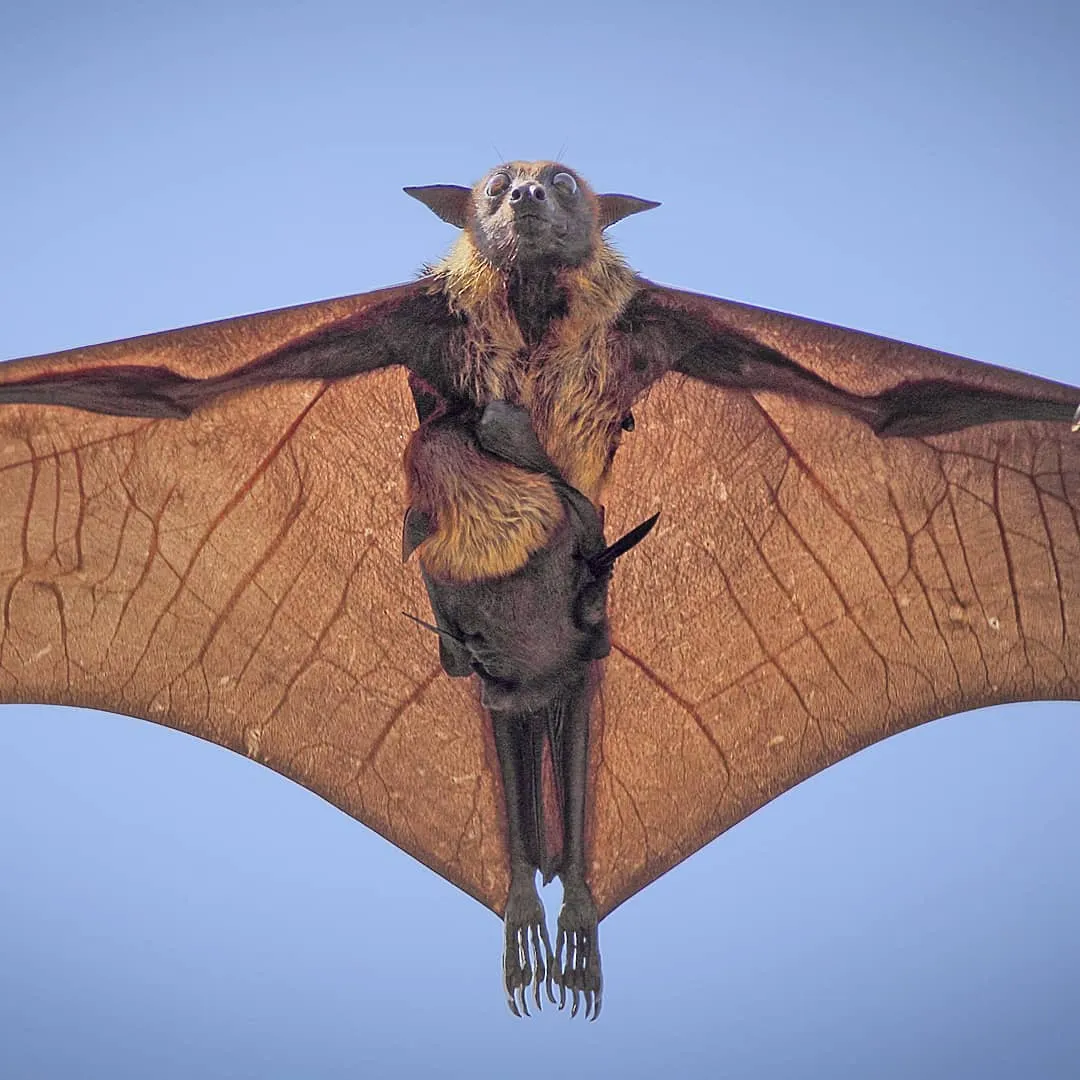
@EligeAUsername/reddit.com
With enormous, round eyes adapted for night vision and an unusual diet of leaves, flowers, and tree sap, the colugo remains one of the most mysterious and least-studied mammals. Despite its impressive aerial abilities, it’s a slow and clumsy climber on tree trunks, relying entirely on gliding to escape predators.
Naked Mole Rat
Imagine an animal that looks like a hairless rodent crossed with a wrinkled prune. The Naked Mole Rat is a burrowing marvel, native to East Africa, with a lack of fur, huge teeth protruding from its lower jaw, and an incredibly social lifestyle. These bizarre creatures live in colonies underground and have an almost mutant-like ability to resist cancer, making them a scientific wonder.
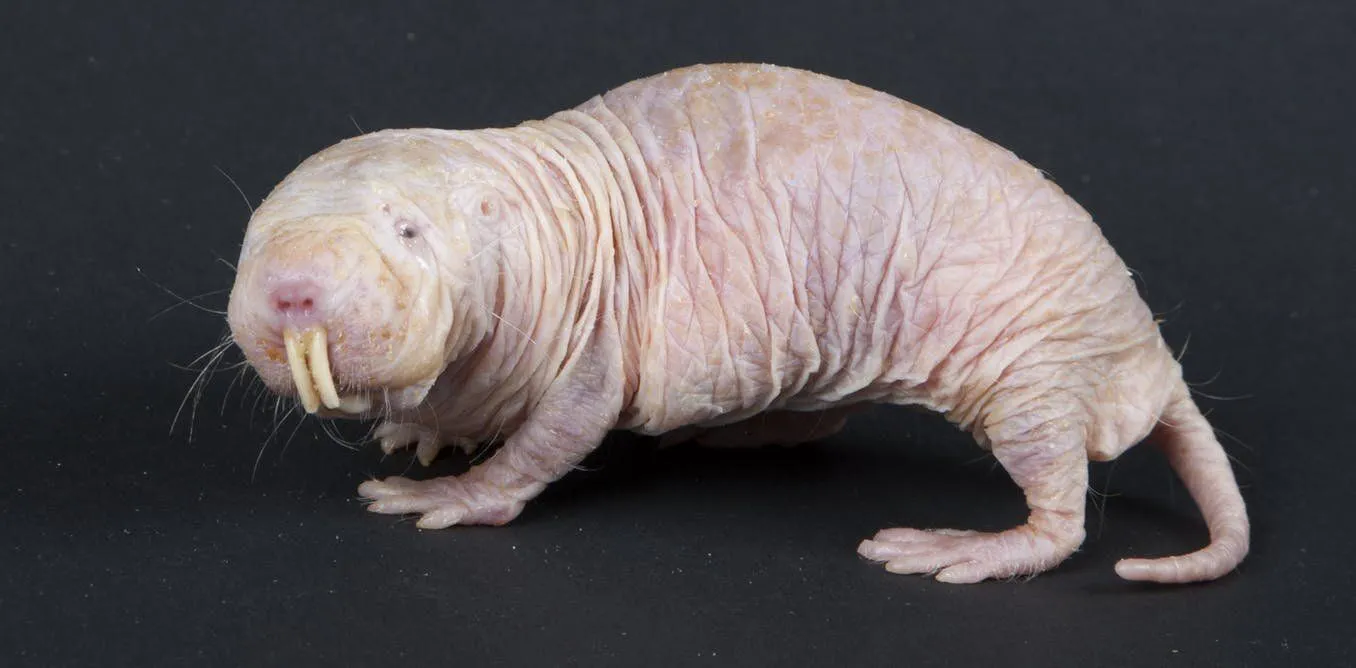
@JunipOsteosp/reddit.com
At up to 35 grams, they’re tiny but mighty, with lifespans pushing 30 years. Their skin’s so loose that they can turn around in tunnels like a sock puppet. The Naked Mole Rat has adapted to harsh conditions and a complex social structure, making them both weird and endlessly fascinating.
Tardigrade
A microscopic, near-indestructible creature, the Tardigrade, or "Water Bear," looks like something out of a nightmare when magnified. Despite being only about 1mm long, this creature can survive extreme conditions: from the vacuum of space to boiling water.
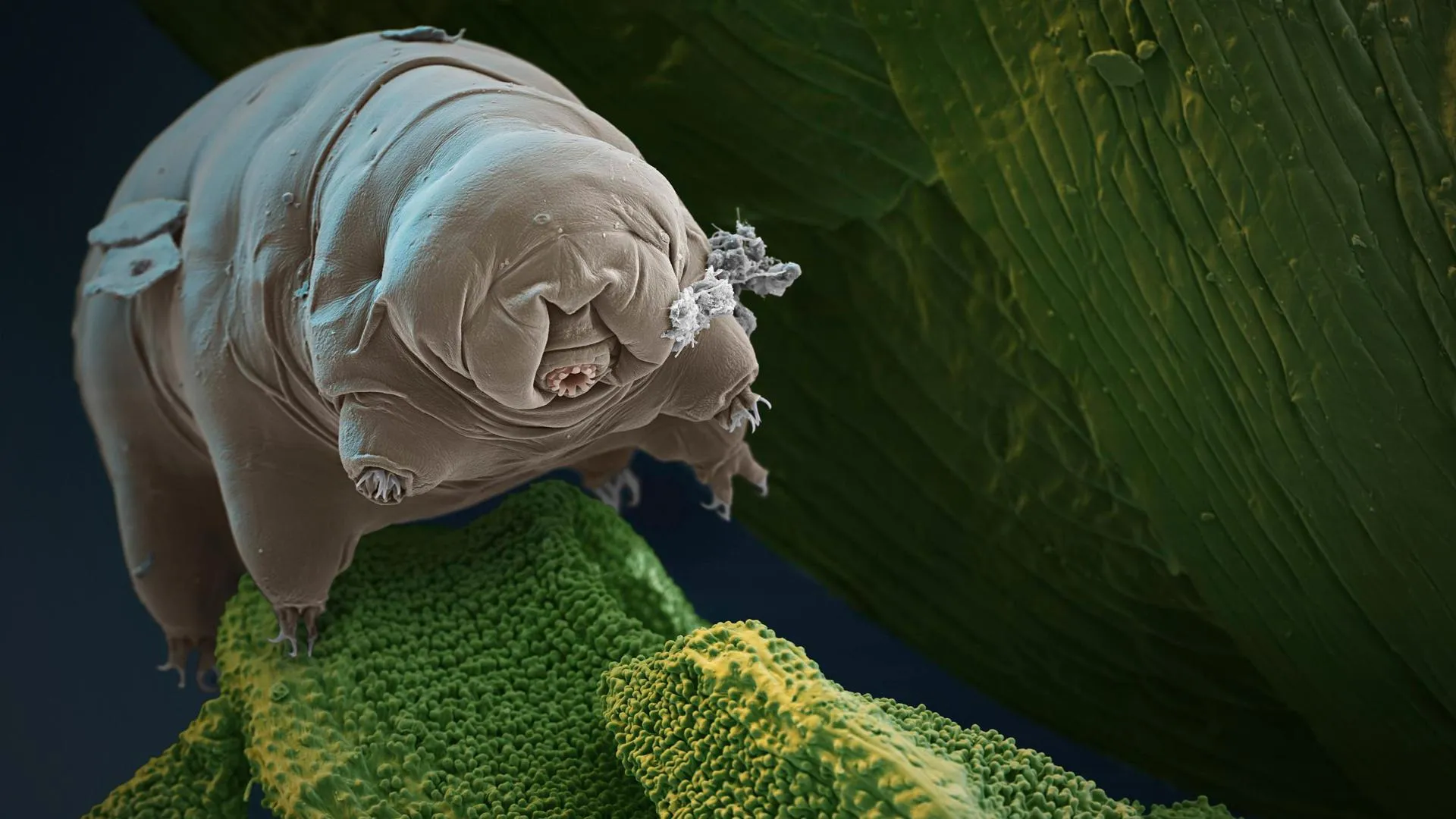
@iJubag/reddit.com
It has a round, pudgy body with eight legs, each ending in tiny claws that help it crawl, even in outer space. Their resilience is the stuff of legend. Whether exposed to freezing temperatures or the radiation of space, Tardigrades endure it all, making them true survivors of the strange world.
Axolotl
The Axolotl, often called the "Mexican walking fish," is a freshwater salamander that looks like it's straight out of a cartoon. With its permanently baby-faced features, external gills, and the ability to regenerate entire limbs, it’s one of the weirdest creatures in the animal kingdom.
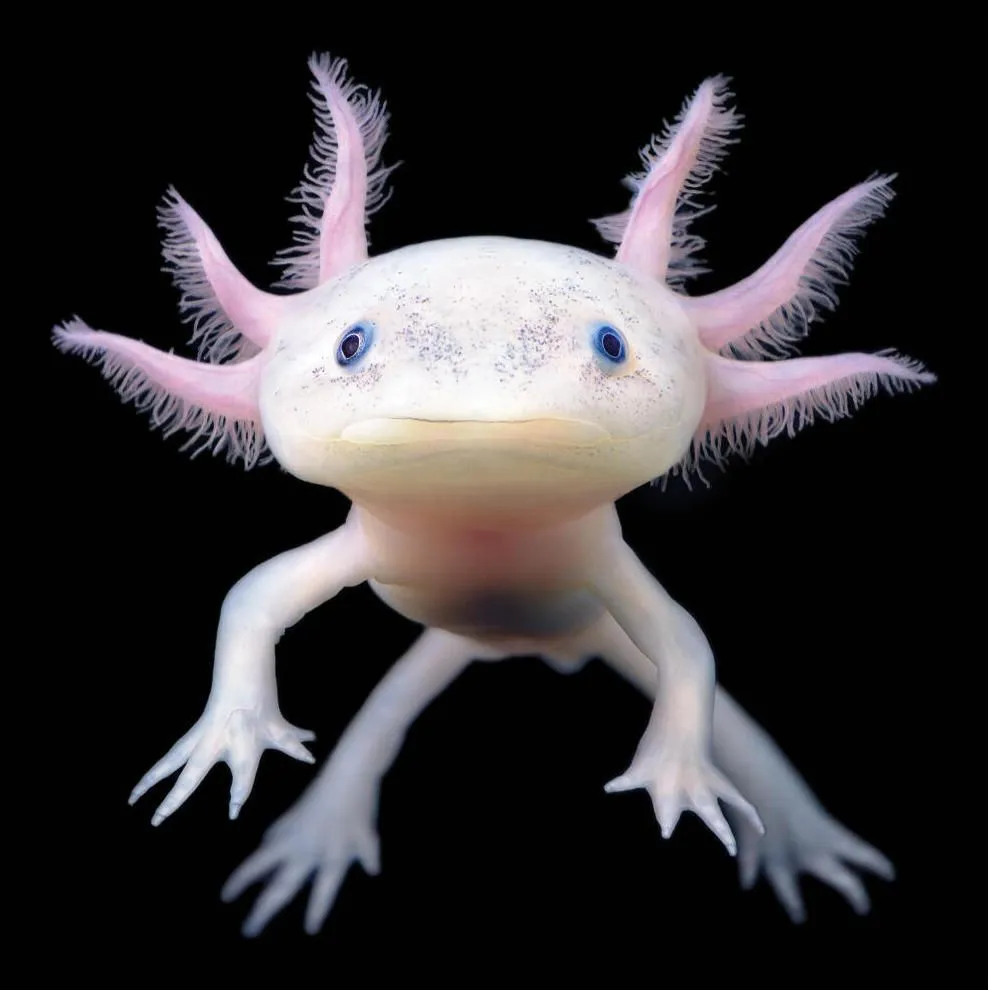
@Awwducational/reddit.com
Native to lakes in Mexico, the Axolotl has a smiley, almost comical expression, and its bright pink or albino color adds to its otherworldly look. It can live its entire life in a larval form, making it even more unique and bizarre in the realm of amphibians.
Thorny Dragon
The Thorny Dragon, also known as the Mountain Devil, is a spiky lizard that looks like a miniature, walking fortress. Found in Australia, it uses its thorn-covered skin as camouflage to blend into the dry, desert landscape. Its strange appearance is enhanced by a "false head" on the back of its neck, which confuses predators.
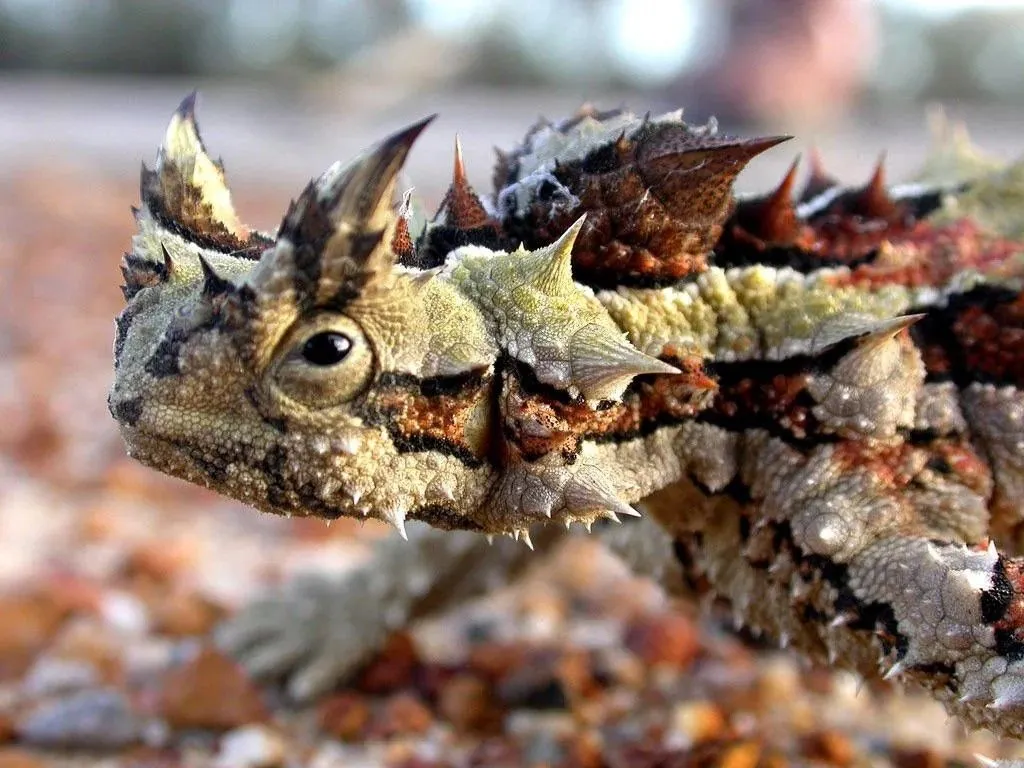
@Blinky39/reddit.com
When thirsty, this creature can collect water from dew or rain by channeling it through grooves in its skin and into its mouth. With its armored body and unique survival skills, the Thorny Dragon is a true oddity of the Australian wilderness.
Lowland Streaked Tenrec
A cross between a hedgehog, a shrew, and a porcupine, the lowland streaked tenrec is one of Madagascar’s strangest creatures. Its yellow-and-black striped body is covered in quills, which it uses both for self-defense and communication. When threatened, it raises its quills and vibrates them to produce an eerie sound, a form of echolocation unique among terrestrial mammals.
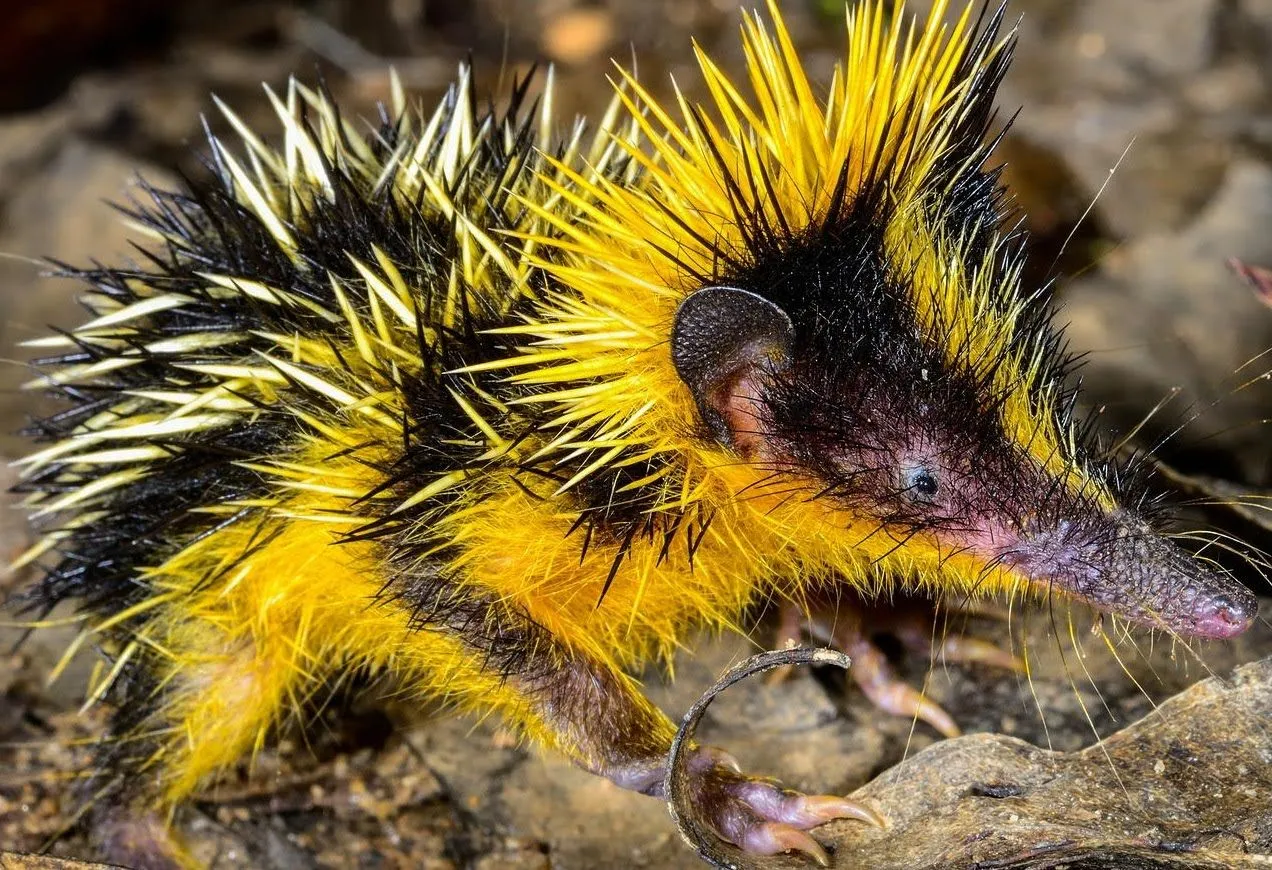
@thecunnybadger/reddit.com
It’s also one of the only mammals known to use stridulation—similar to how insects produce sounds. These creatures are highly energetic, often engaging in rapid movements through dense underbrush. Their nocturnal lifestyle helps them avoid many daytime predators.
Panda Ant
Despite its name, the panda ant is not an ant but a species of wingless wasp. Found in Chile, it sports striking black-and-white fur, resembling a panda. But don’t be fooled by its cute appearance—this tiny creature delivers an incredibly painful sting, earning it the nickname “cow killer.” The panda ant is a solitary insect, rarely seen in large numbers.
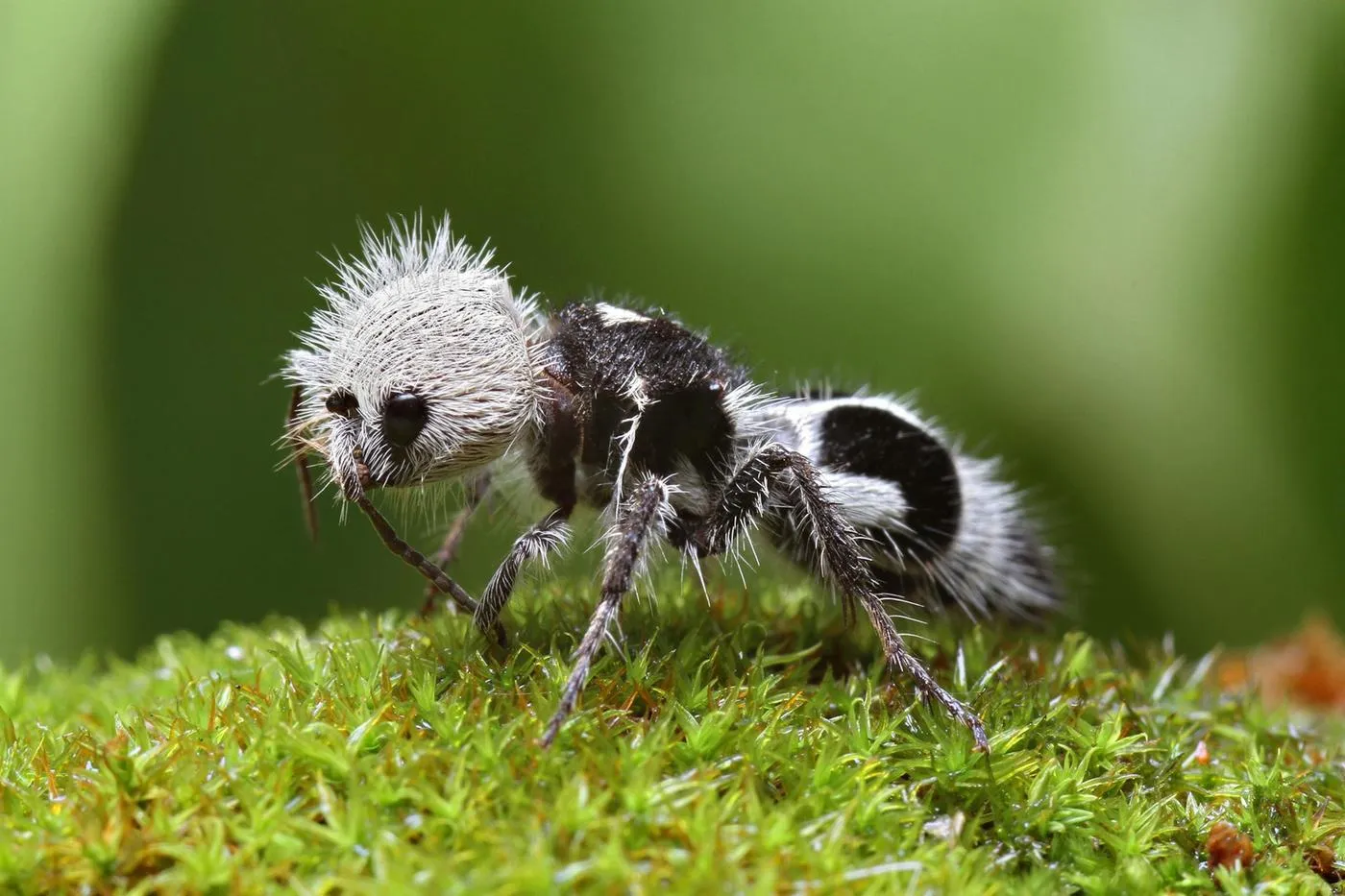
@NatureIsFuckingLit/reddit.com
Its tough exoskeleton provides protection from predators. Scientists are still studying its unique venom, which has properties that could have medicinal applications. Although small, its vibrant appearance serves as a warning to potential threats. Their lifespan is relatively short, averaging about two years in the wild.
Venezuelan Poodle Moth
Discovered in 2009, this bizarre moth looks like a fluffy poodle with wings. With its large, feathery antennae and cotton-like body, it resembles a plush toy more than an insect. Little is known about its behavior, adding to its mystery.
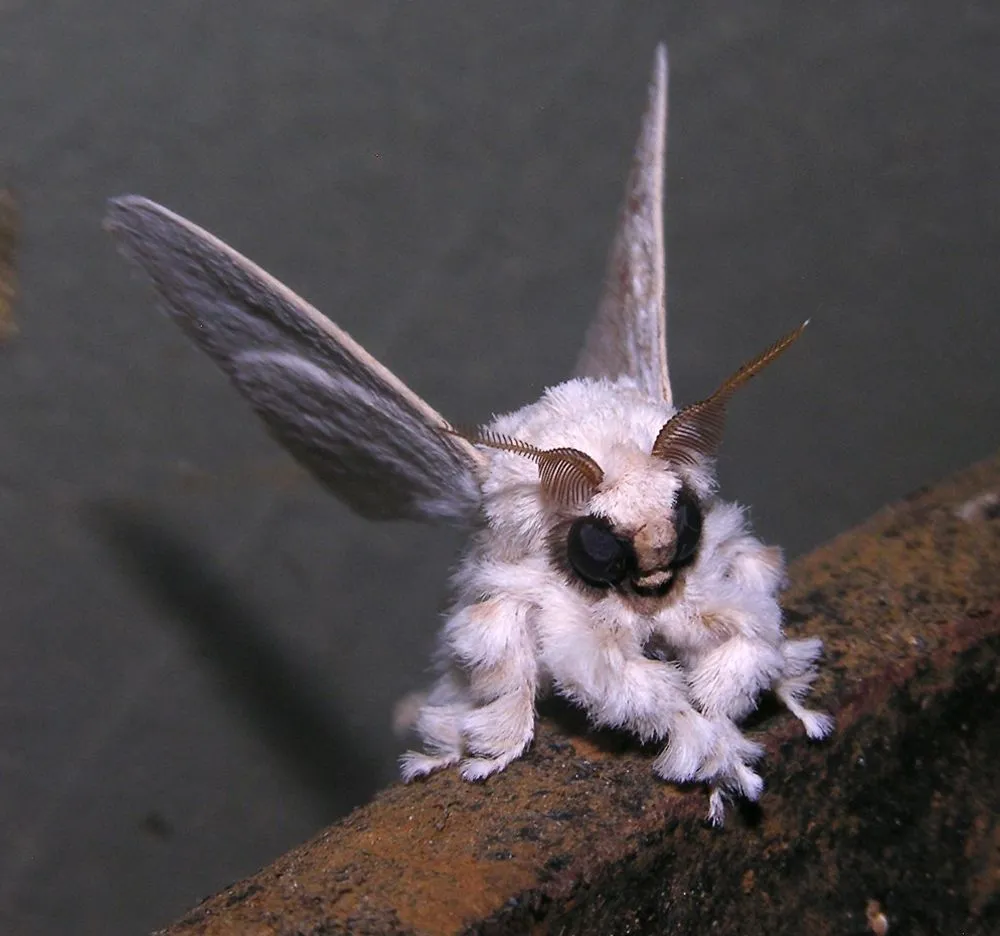
@LiveConga28/reddit.com
Scientists believe it may be nocturnal, using its soft, dense fur to keep warm in colder temperatures. Unlike most moths, it appears to lack distinct camouflage, making it stand out in its environment. Researchers are still trying to determine its closest relatives in the moth family.
Pink Fairy Armadillo
Measuring just a few inches long, this tiny armadillo has soft pink armor and looks like a living plush toy. It burrows in the deserts of Argentina, spending most of its life underground, making it one of the hardest animals to spot in the wild. Its unique armor is not just for protection—it also helps regulate its body temperature.
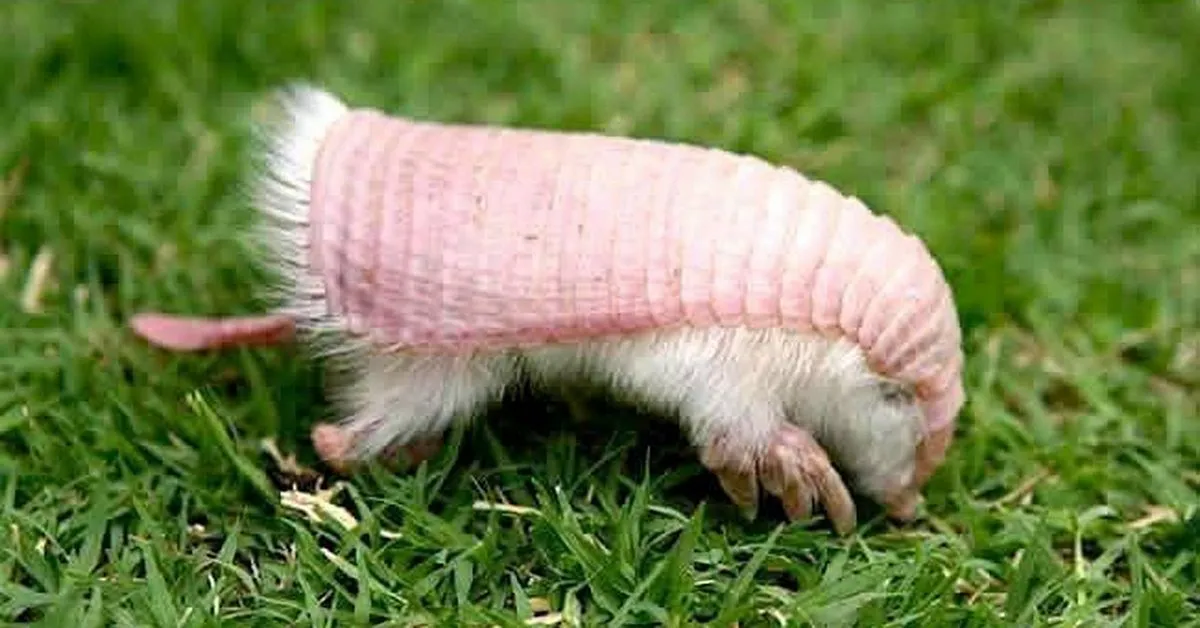
@countdookee/reddit.com
The pink fairy armadillo has tiny eyes, relying more on touch and sound to navigate. It uses its sharp claws to dig elaborate tunnels quickly. Its diet consists mostly of ants and larvae, which it locates using its highly sensitive nose. Unfortunately, habitat destruction poses a significant threat to its population.
Purple Frog
A creature that looks more like a bloated balloon than a frog, the purple frog spends most of its life underground. Native to India, this strange amphibian emerges only a few days a year to mate. It has an oddly small head, tiny eyes, and a plump, purplish body, resembling a purple balloon.
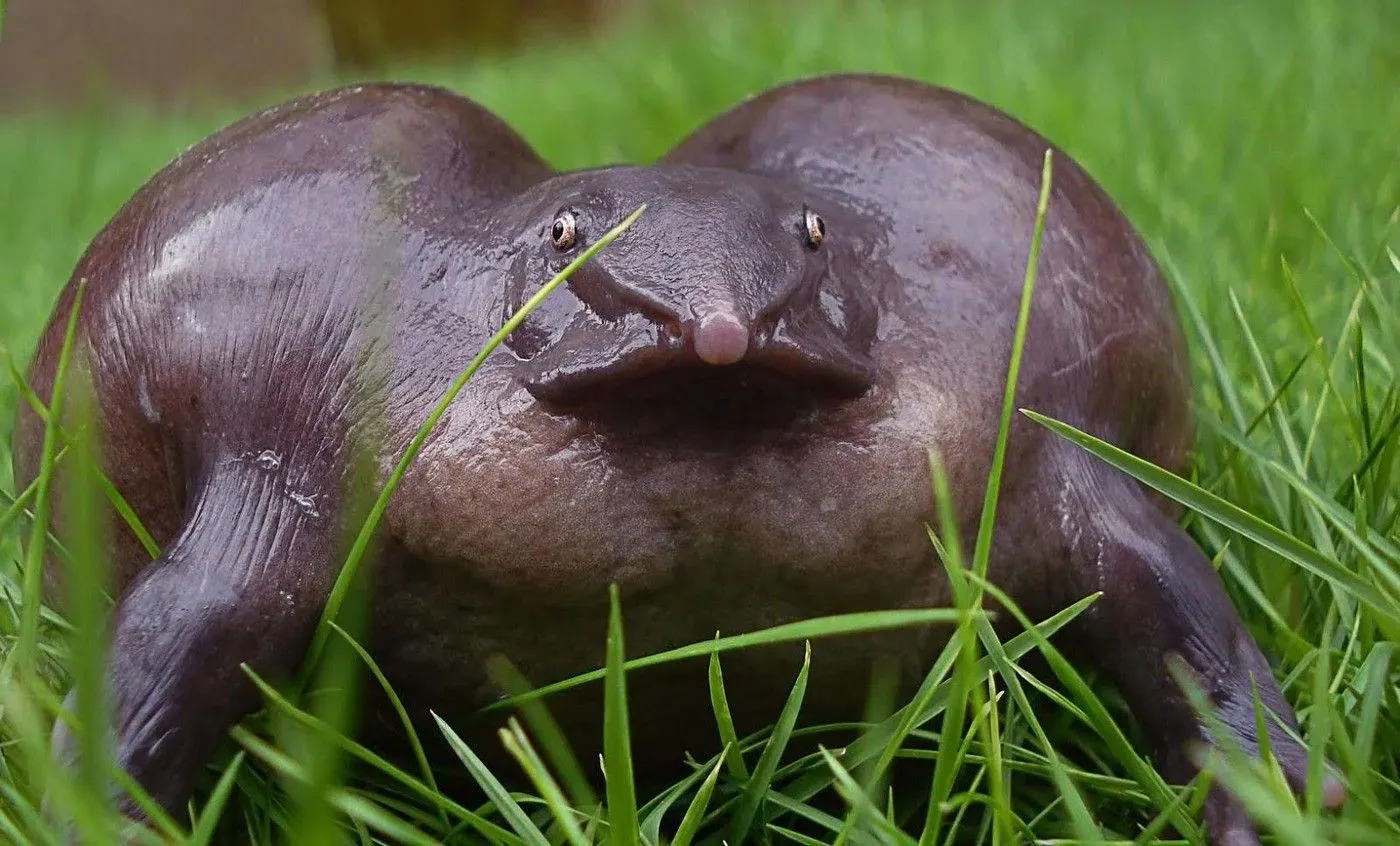
@Atothezman/reddit.com
This frog's unique appearance is a result of millions of years of isolated evolution in the Western Ghats. Its diet consists mainly of termites, which it captures with its specialized tongue. The Purple Frog's calls are also unusual, sounding more like a chicken than a typical frog. Its ancient lineage connects it to frogs found in the Seychelles, showcasing the remnants of Gondwana.
Gharial
The Gharial is an ancient, crocodile-like reptile with an exaggeratedly long, thin snout that looks more like a piece of submerged driftwood than an animal. Native to the rivers of India and Nepal, the Gharial’s long snout is designed for catching fish, its primary food.
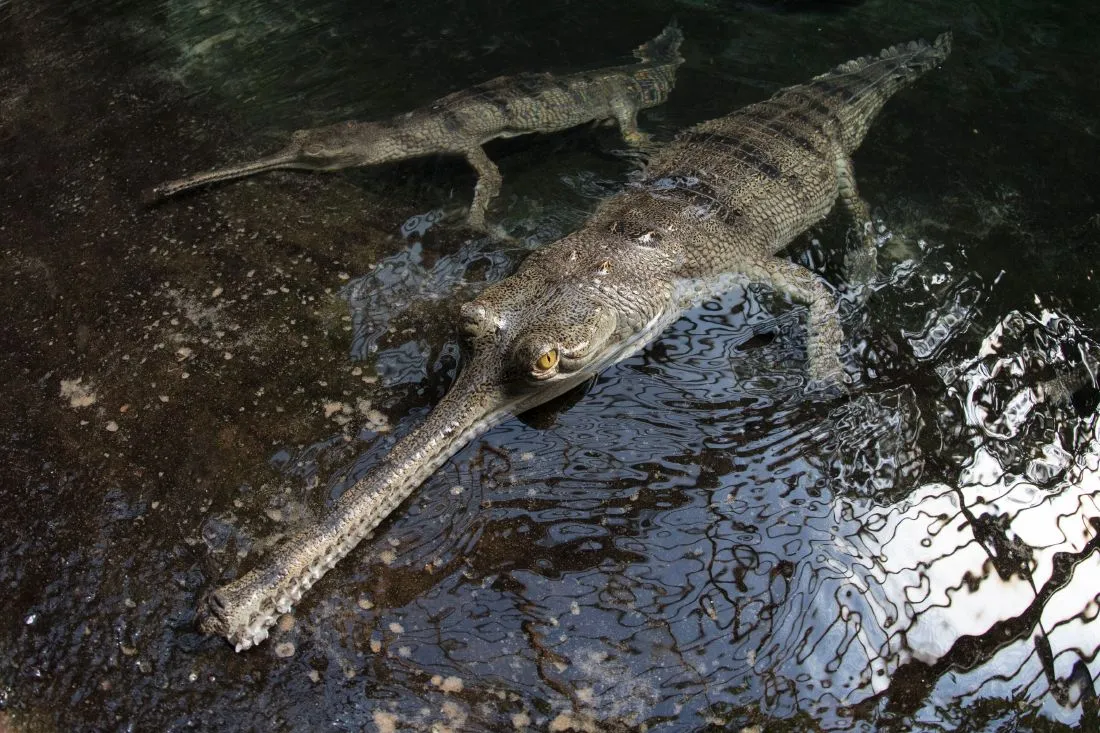
@VoteLymanZeigler2020/reddit.com
With its toothy grin and serpentine appearance, it’s one of the strangest reptiles still in existence. Once teetering on the brink of extinction, the Gharial has made a comeback but its eerie, almost prehistoric look ensures it remains one of the most unusual creatures on Earth.
Blue Dragon
A tiny yet strikingly alien-like creature, this bright blue mollusk floats on water, resembling an alien spaceship with its delicate, wing-like appendages. The blue dragon is a highly skilled predator, preying on Portuguese Man o’ Wars and other venomous sea creatures.
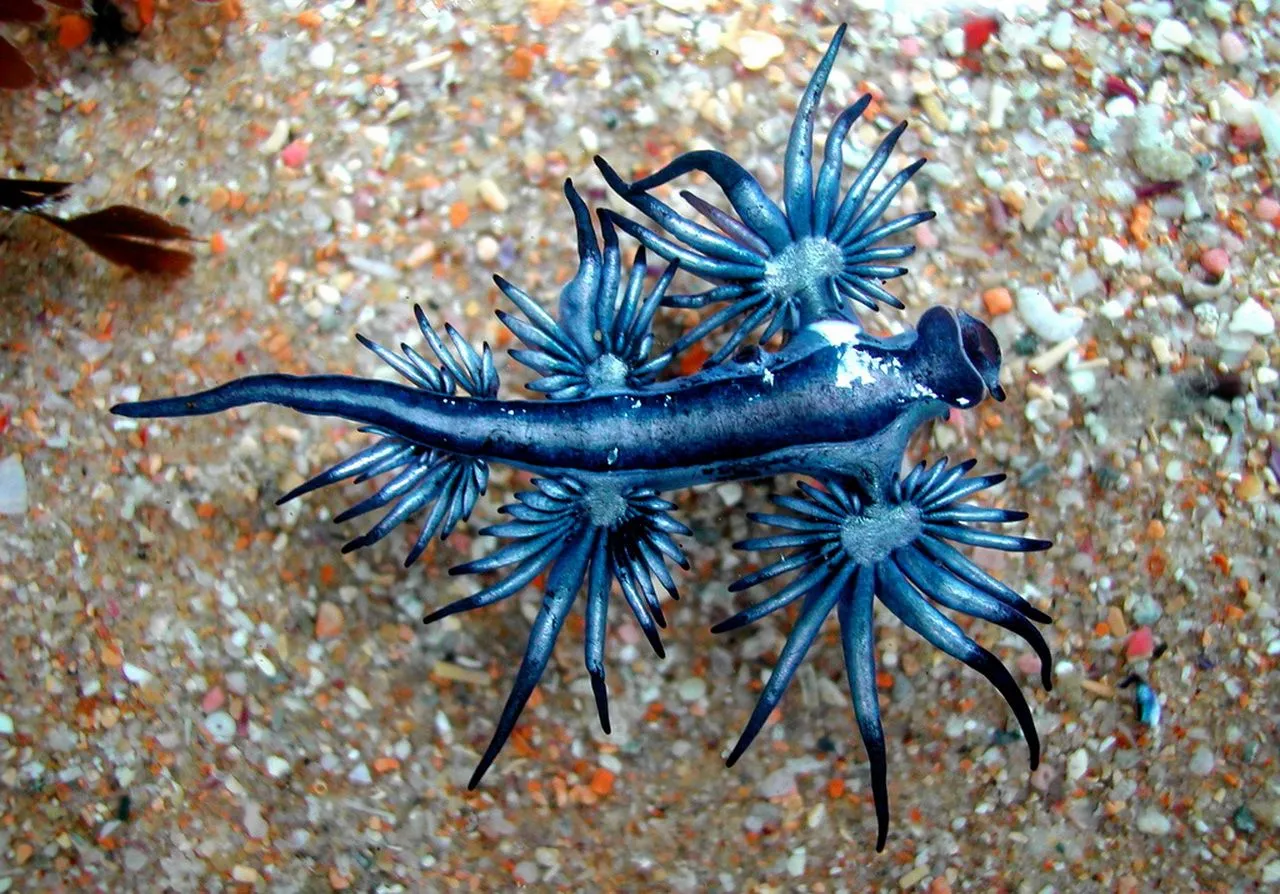
@BatmanDracula/reddit.com
It stores the stinging cells of its prey in its own body, making it even more dangerous. Although small, usually no longer than three centimeters, this creature can deliver a painful sting to anything that threatens it. Its shimmering blue coloration helps it blend in with the ocean’s surface, providing both camouflage and an eerie beauty.
Yeti Crab
The Yeti Crab, Kiwa hirsuta, is a captivating resident of the deep-sea hydrothermal vents. Its most striking feature is its dense covering of long, silky setae on its claws, giving it a "furry" appearance. This unique adaptation serves a vital purpose: the crab cultivates chemosynthetic bacteria on these setae.
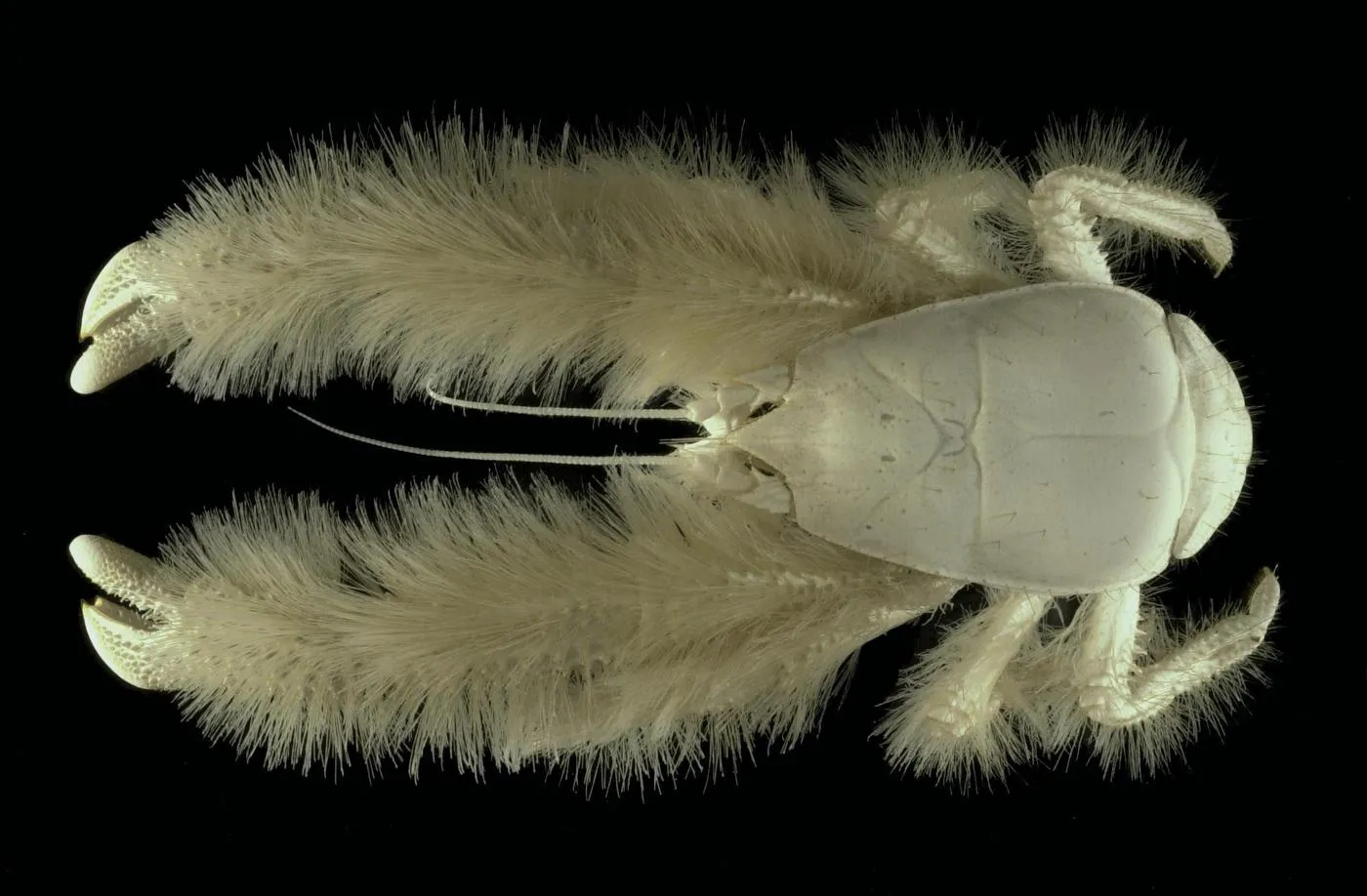
@SixteenSeveredHands/reddit.com
Living in the extreme environment of hydrothermal vents, where sunlight is nonexistent and chemical concentrations are high, the Yeti Crab relies on these bacteria for sustenance. The bacteria, thriving on the chemicals emitted from the vents, provide a readily available food source. The Yeti Crab's reduced eyes suggest an adaptation to the perpetual darkness of its habitat.
Uakari Monkey
With its bald, bright red face, the uakari monkey looks perpetually embarrassed or like it just ran a marathon. This striking appearance is caused by its thin skin, which allows blood vessels to show through, giving it an intense red hue. These monkeys prefer to live in flooded areas, leaping between trees in search of fruit, seeds, and small animals.
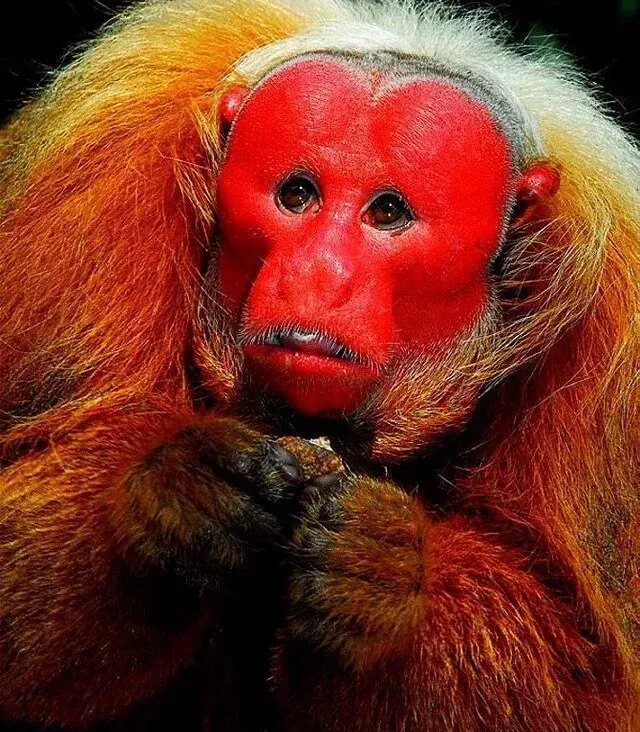
@grazatt/reddit.com
The redness of their face is actually an indicator of health—brighter red means a stronger immune system, making them more attractive to potential mates. Uakaris live in large social groups and are highly vocal, communicating through a variety of grunts and calls.
Penis Snake
The "penis snake," scientifically known as Atretochoana eiselti, is a truly enigmatic amphibian that has captured the curiosity of both scientists and the public. Actually, it is not a snake but a caecilian, a limbless amphibian. This creature's most striking feature is its elongated, cylindrical body, which bears a resemblance to a certain anatomical feature.

@igor_vn/reddit.com
Found primarily in the aquatic environments of Brazil, its existence was largely shrouded in mystery for many years. One of the most remarkable aspects of Atretochoana eiselti is that it lacks lungs. Instead, it is believed to breathe through its skin, a unique adaptation for its aquatic lifestyle. This characteristic sets it apart from most other amphibians.
Markhor
The Markhor is a wild goat with twisted, corkscrew-like horns that make it look like something out of a fantasy novel. Found in the mountainous regions of Central Asia, this elusive animal has a shaggy coat and a distinct, grumpy expression that only adds to its mythic appearance.
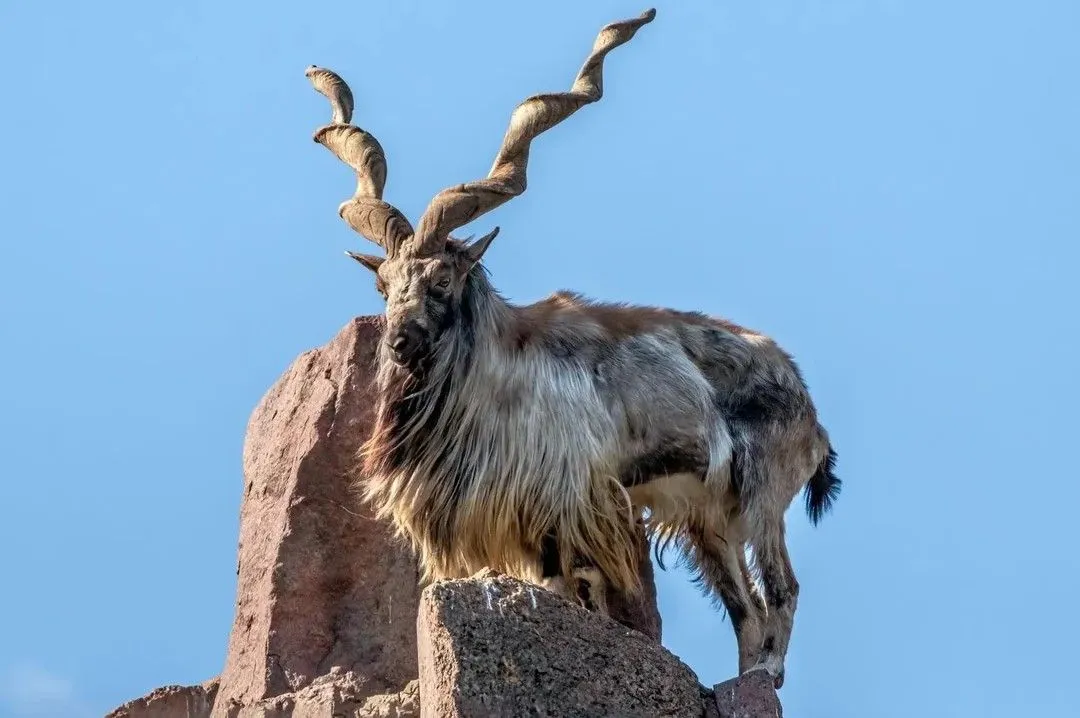
@Username6465/reddit.com
The Markhor's horns can grow up to 1.5 meters long, curling in such a way that they create an otherworldly silhouette against the mountain backdrop. Known for its agility in scaling steep cliffs, the Markhor is as impressive as it is bizarre, with an almost mythical status in the regions it inhabits.
Komodo Dragon
The Komodo Dragon is a fearsome and terrifying reptile, a true prehistoric relic. With its scaly skin, long, forked tongue, and massive size (it can grow up to 10 feet long), this apex predator is a living legend of the animal kingdom. Native to Indonesia’s Komodo Island, it has a deadly bite.
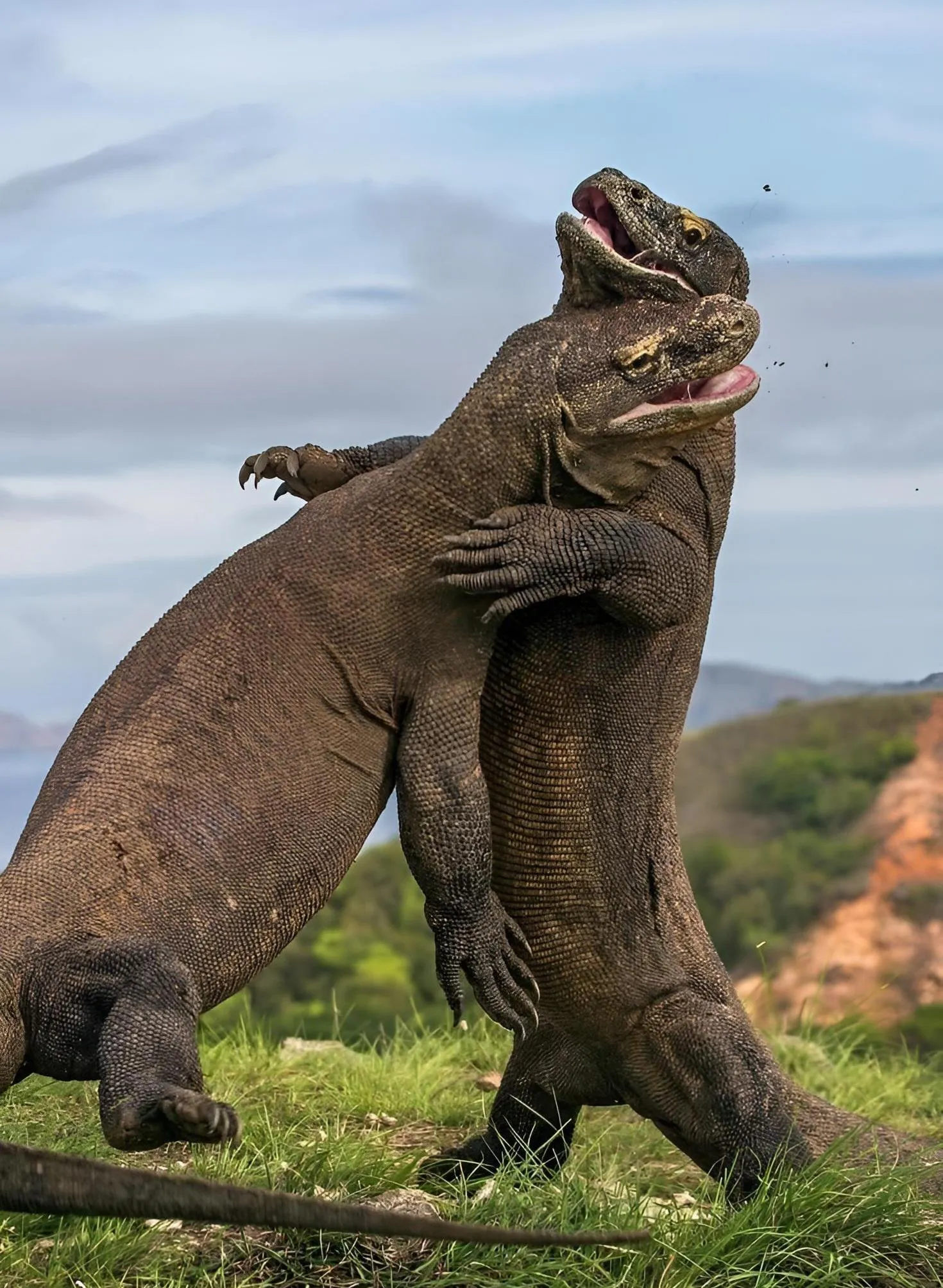
@Gainsborough-Smyt/reddit.com
It is not only because of its sharp teeth but because its saliva is teeming with bacteria, making even a small bite potentially fatal. Its giant, muscular body and cold, calculating gaze give it a terrifyingly bizarre presence in the wild, as though it belongs to another era.
Long-Wattled Umbrellabird
The Long-Wattled Umbrellabird is a spectacle of avian eccentricity, a creature that seems to have donned a costume for a rainforest masquerade. Native to the cloud forests of Ecuador and Colombia, this bird's most striking feature is its extravagant wattle, a long, inflatable pouch that hangs from its chest.
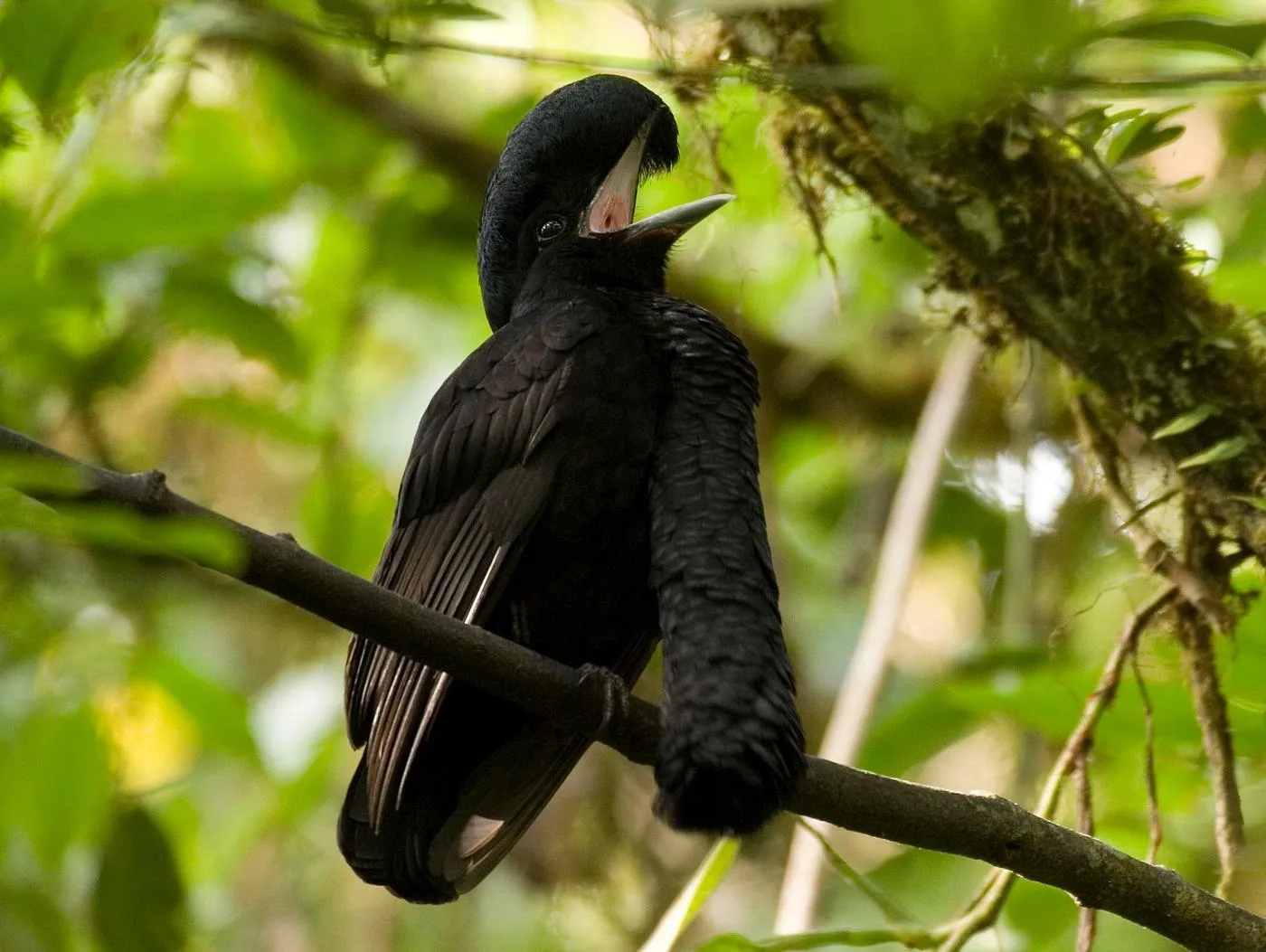
@SZASZ_85/reddit.com
This wattle, covered in glossy black feathers, can be inflated and swung back and forth during courtship displays, creating a deep, resonant booming sound. The male's elaborate performance is a crucial part of attracting a mate, showcasing his vigor and genetic fitness.
Gooty Sapphire Ornamental Tarantula
This vibrant blue arachnid is one of the most strikingly beautiful and rare tarantulas in the world. Its iridescent, electric blue coloration is due to microscopic structures in its hairs that reflect light, creating a mesmerizing shimmer. However, this dazzling beauty masks a fierce nature.
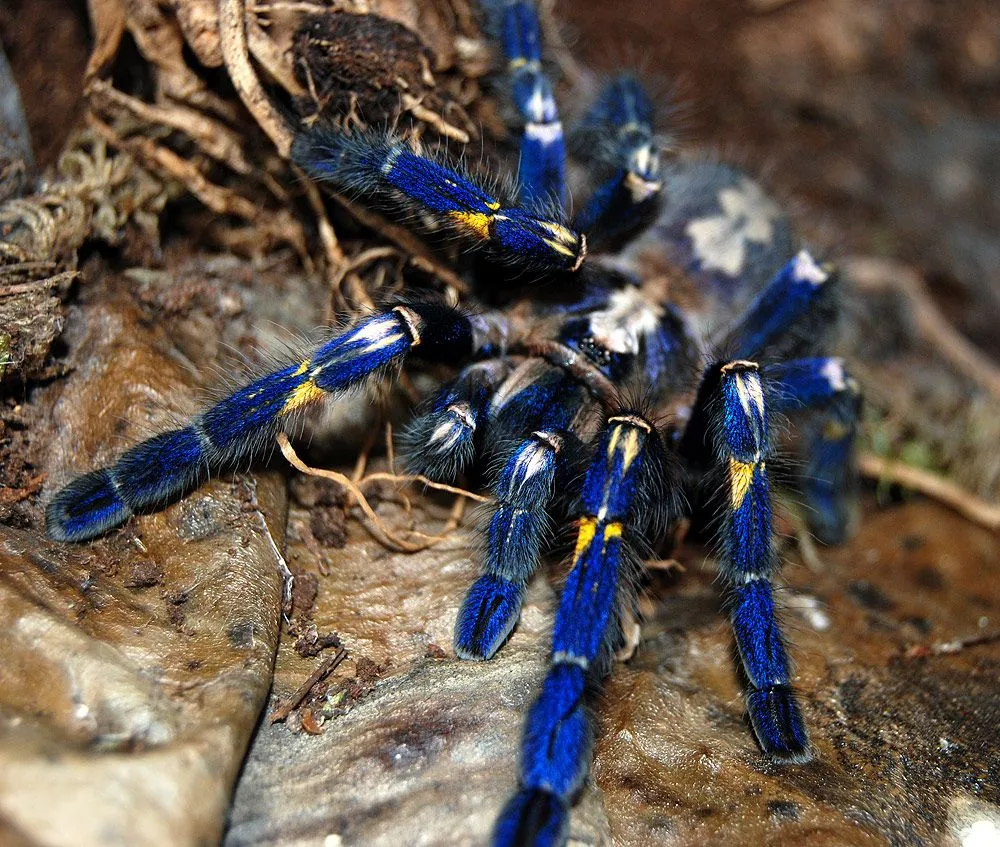
@pencer/reddit.com
The tarantula is highly defensive and will not hesitate to bite if it feels threatened. While its venom is not lethal to humans, it can cause intense pain, swelling, and muscle cramps, making it a creature best admired from a distance. These spiders are arboreal, meaning they live in trees, and they spin intricate webs in the bark crevices.
Mexican Mole Lizard
It's a limbless lizard with two tiny, clawed front legs. This enigmatic reptile spends most of its life burrowing through sandy soils, earning its nickname "two-legged worm lizard." Its smooth, pinkish body, reminiscent of a worm, is perfectly adapted for subterranean life. The miniature front legs, armed with sharp claws, are used for digging and maneuvering through underground tunnels.
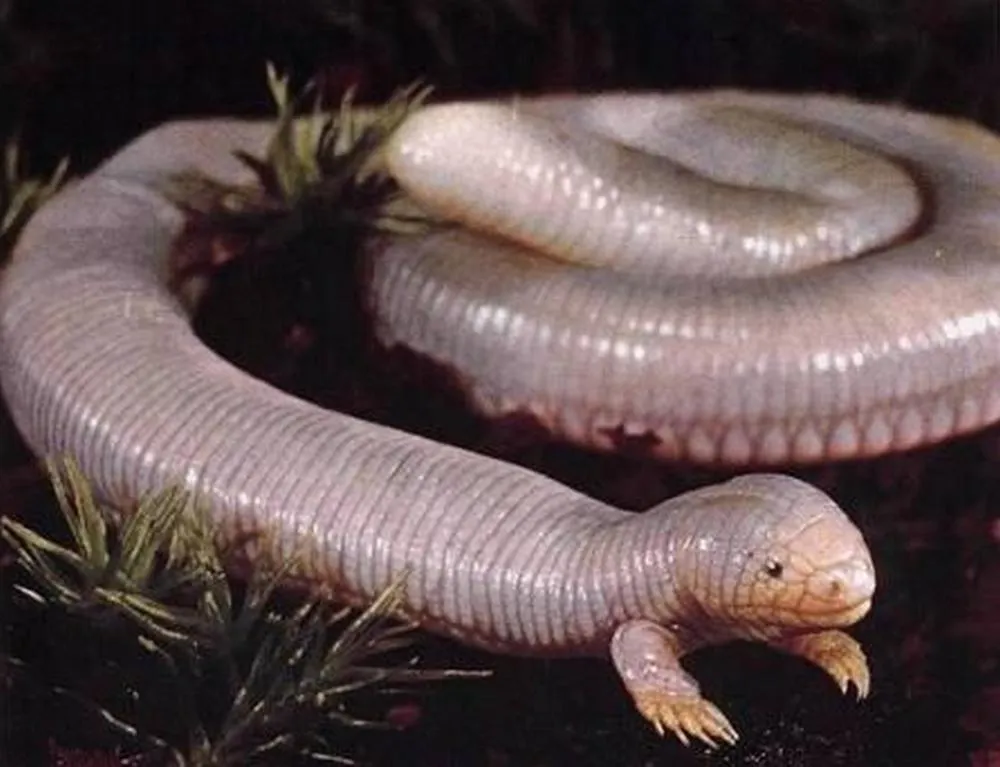
@mccur1eyfries/reddit.com
Unlike snakes, which lack limbs entirely, the Mole Lizard's vestigial legs are a testament to its evolutionary history. This elusive creature is primarily nocturnal, emerging only occasionally to the surface. It feeds on insects and other small invertebrates, using its keen sense of smell to locate prey.
The Japanese Spider Crab
Imagine a creature straight out of a sci-fi movie, with legs stretching longer than a car and a body that seems both ancient and alien. Meet the Japanese Spider Crab, the largest arthropod on Earth, with a leg span that can reach up to 12 feet! This colossal crustacean looks like a giant spider that decided to try life underwater.
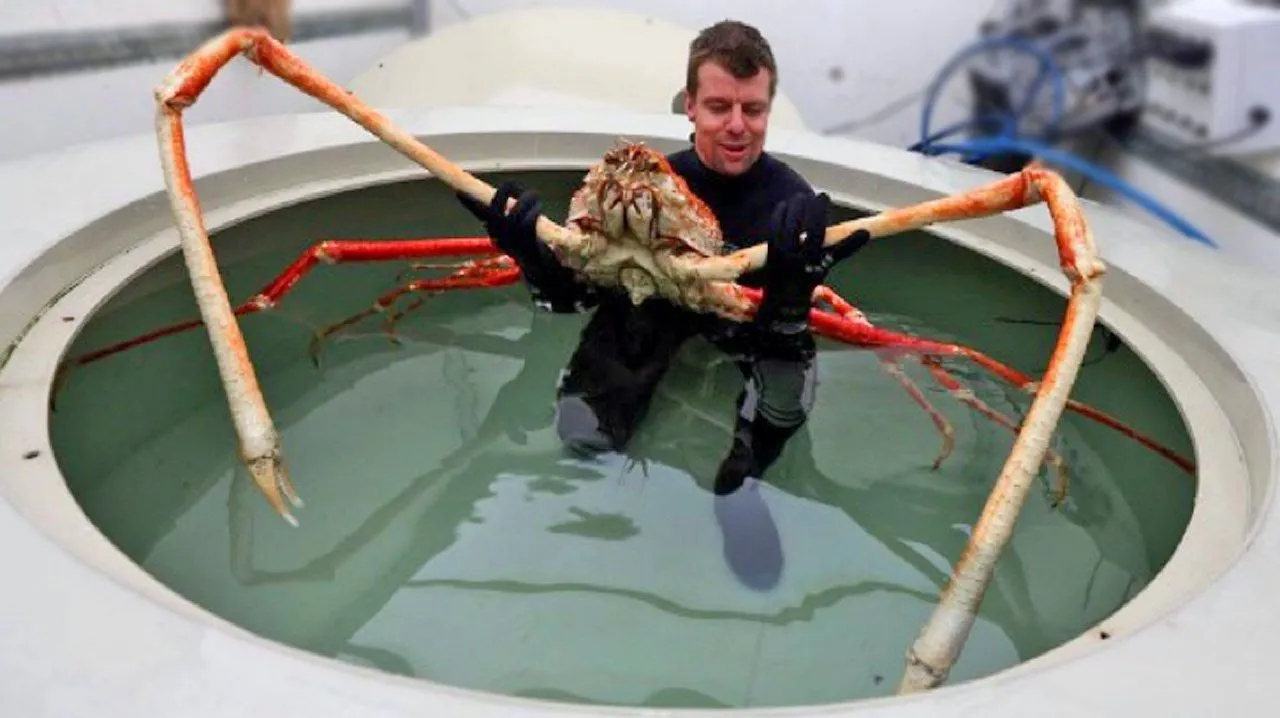
@NatureIsFuckingLit/reddit.com
Its spindly legs are covered in spines, and its body is a mottled orange-brown, perfect for blending into the rocky ocean floor. Despite its intimidating size, the Japanese Spider Crab is a gentle giant, feeding on dead animals, plants, and shellfish. It’s also a master of longevity, living up to 100 years.
Honduran White Bat
If you thought all bats were dark and spooky, the Honduran White Bat is here to prove you wrong. This tiny, cotton-ball-sized bat is a dazzling snow-white with a bright yellow nose and ears, making it look like a living marshmallow with wings. These tiny bats, residing in Central American rainforests, measure a mere 1.5 inches.
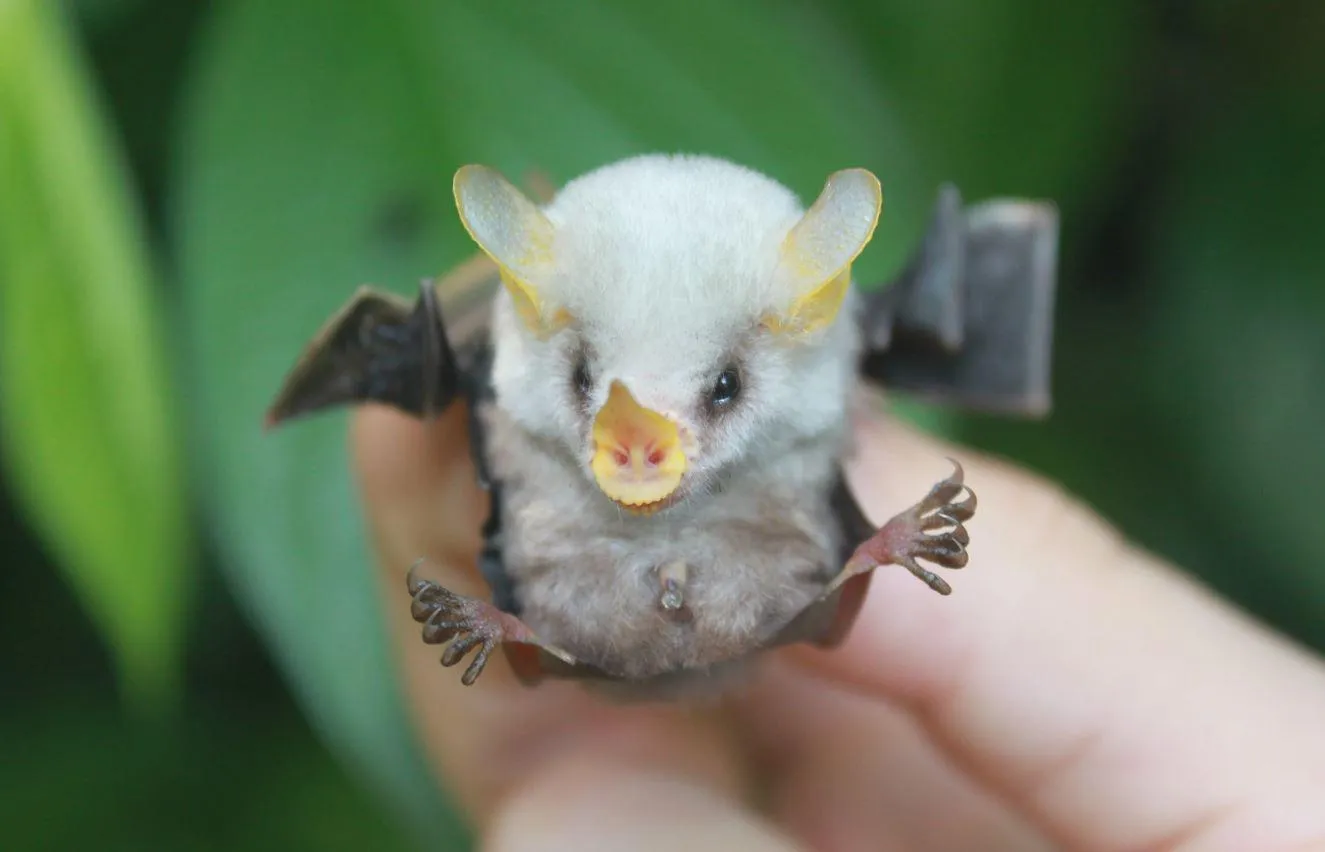
@Sapulinjing/reddit.com
Remarkably, they are among the few bat species that create their own shelters by folding large leaves into "tents." These “tent-making” skills make them nature’s tiny architects. Honduran White Bats are frugivores, feasting almost exclusively on figs, which gives their fur a faint yellowish tint. They live in tight-knit colonies, often huddling together for warmth and protection.
Satanic Leaf-Tailed Gecko
Native to Madagascar’s misty rainforests, the Satanic Leaf-Tailed Gecko is a living optical illusion—a creature so perfectly bizarre it seems plucked from a gothic fairy tale. Its body is a masterclass in deception: mottled brown and green skin mimics decaying foliage, complete with faux leaf veins, jagged edges, and even lichen-like speckles.
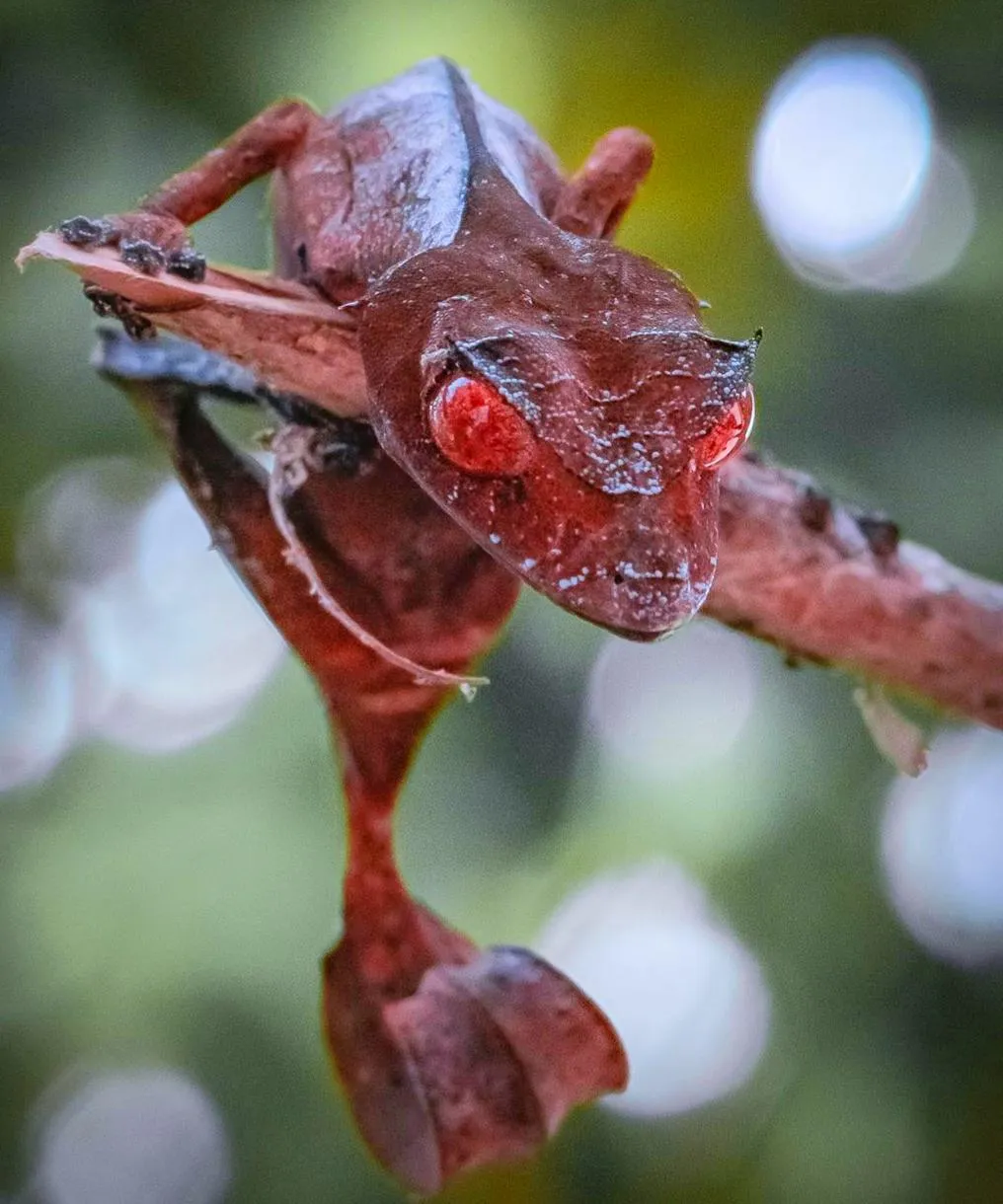
@Jakunai/reddit.com
Its lidless, glowing orange eyes stare unblinkingly like embers in the dark, and its prehensile tail curls like a dried leaf. Locals whisper that these geckos are forest spirits, capable of cursing those who disturb them. This myth is fueled by their eerie stillness by day and ghostly nocturnal hunts.
Manatee
Manatees, also known as sea cows, are gentle giants that inhabit shallow, slow-moving rivers and coastal areas. These herbivorous marine mammals are known for their rotund bodies and paddle-like tails, which they use to propel themselves through the water.
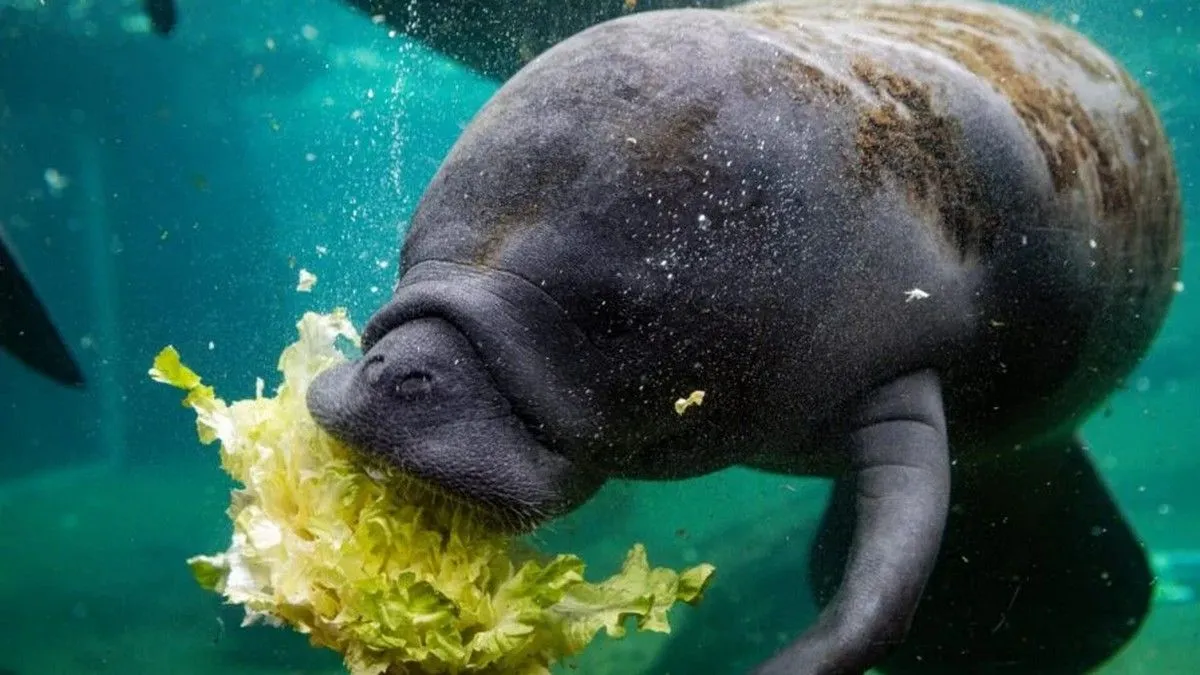
@chrisdh79/reddit.com
Manatees are often seen grazing on aquatic plants, consuming up to a tenth of their body weight each day. Despite their size, they are graceful swimmers and can hold their breath for up to 20 minutes. Manatees are often found in Florida's Crystal River and other tropical regions, where they are a popular attraction for wildlife enthusiasts.
Spiny Bush Viper
If dragons had a baby with a snake, it would probably look like the Spiny Bush Viper. Its body is a kaleidoscope of neon greens, golden yellows, and even fiery oranges, all wrapped in jagged, keeled scales that give it the appearance of a mythical beast. Each scale is like a tiny, spiky ridge, making the snake look like it’s wearing armor stolen from a medieval knight.
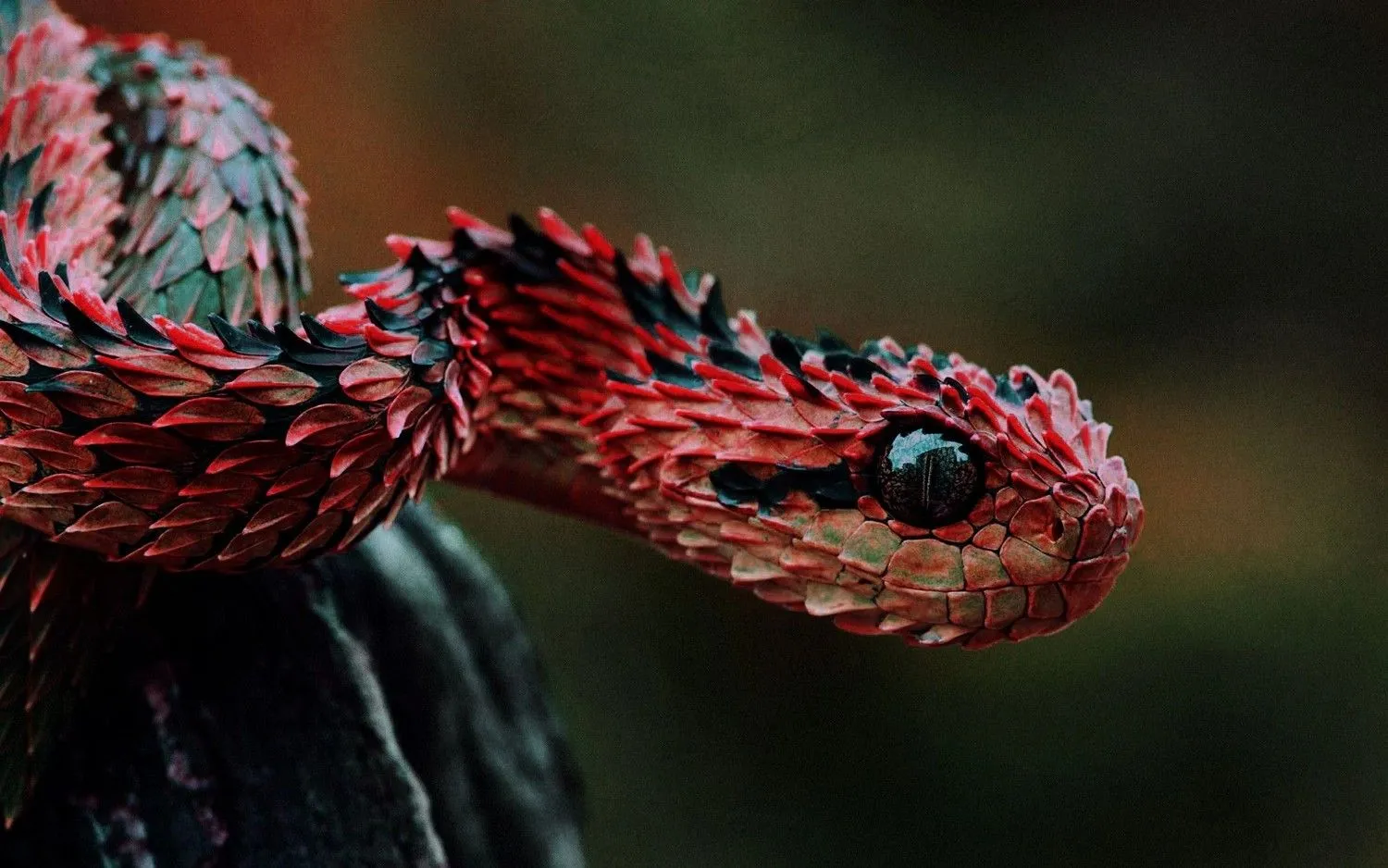
@The--Weasel/reddit.com
What’s truly fascinating about this snake is how it embodies the concept of “looks can kill.” Its vibrant colors and spiky texture scream about danger to potential predators, a phenomenon known as aposematism. And yet, there’s something almost cartoonish about its appearance—like a villain in a children’s storybook, equal parts terrifying and oddly charming.
Attenborough’s Fan-Throated Lizard
The Sitana marudhamneydhal, also known as Attenborough’s fan-throated lizard, is a captivating species of lizard found in the southern regions of India, particularly in Tamil Nadu and Kerala. This lizard is part of the Agamidae family and is known for its distinctive fan-like throat dewlap, which is highly serrated and extends significantly beyond the forearm insertion.
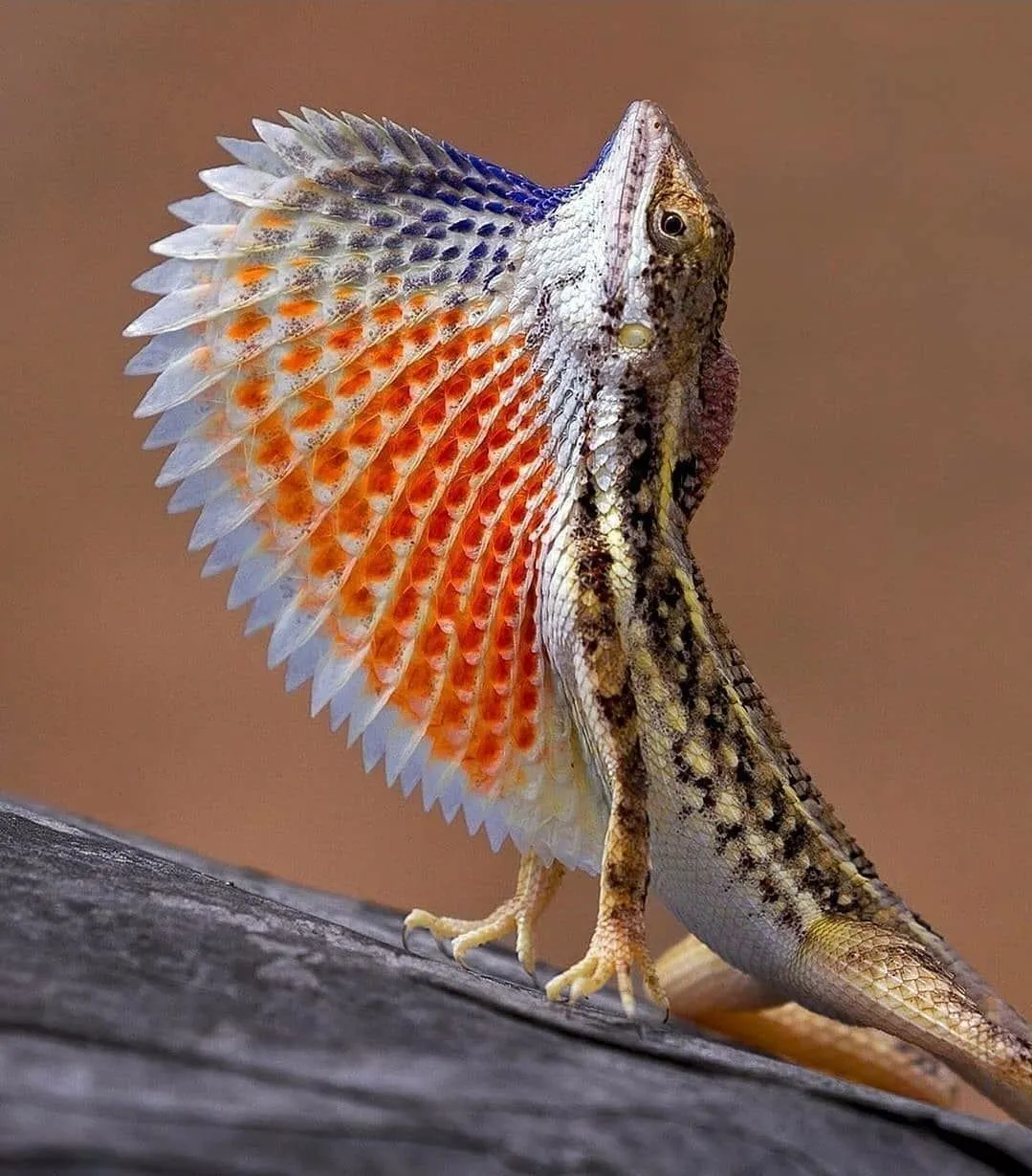
@TheRookieGetsACookie/reddit.com
This feature is not only visually striking but also plays a crucial role in the lizard's communication and mating rituals. Its name is derived from ancient Tamil words, reflecting its presence in both cultivable grasslands (marudham) and seashore environments (neydhal). This adaptability showcases the lizard's resilience and ability to thrive in diverse habitats.
Magnificent Frigatebird
The magnificent frigatebird is a large, distinctive seabird found in the tropical and subtropical regions of the world. These impressive birds are known for their long, hooked bills, forked tails, and distinctive red throat pouches, which males inflate to attract mates. Magnificent frigatebirds are also known for their aerial acrobatics, often seen soaring high above the ocean in search of food.
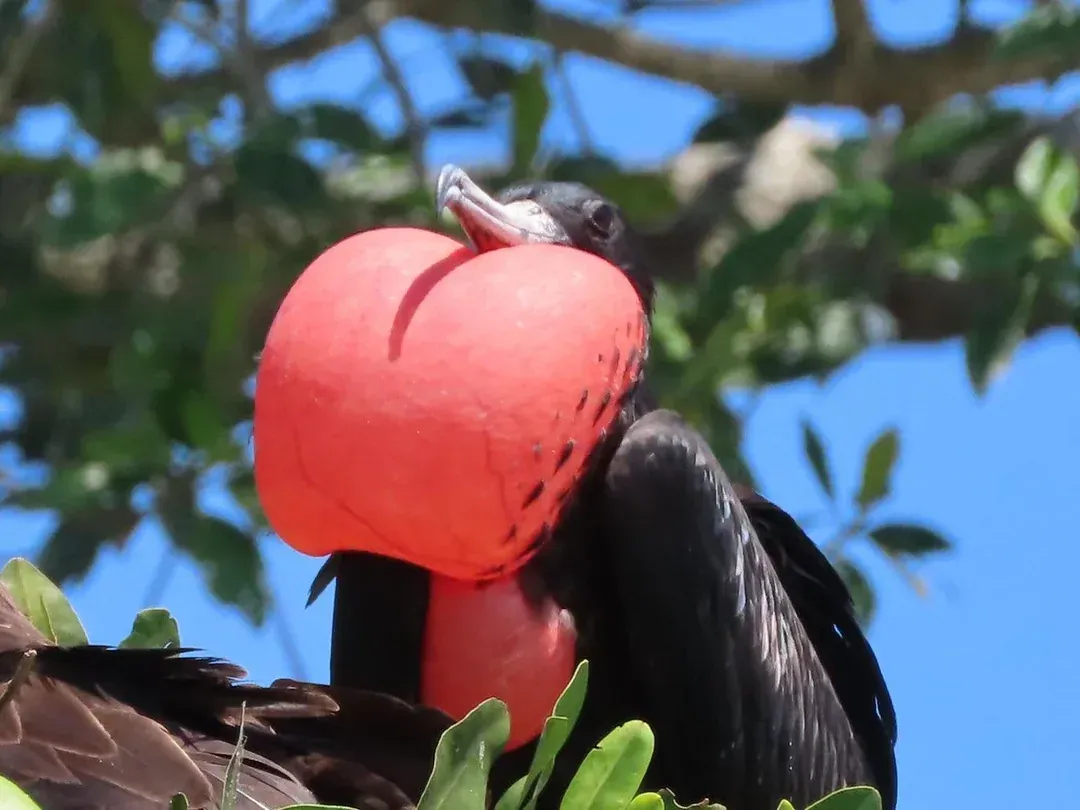
@Kikiholden/reddit.com
They frequently steal food from other seabirds in mid-air, showcasing their agility and opportunistic nature. While they spend much of their lives over water, they cannot land on it, as their feathers lack the waterproofing of other seabirds. Despite their fearsome appearance, these birds are generally harmless to humans.
Hammer-Headed Bat
The hammer-headed bat is known for its unusual appearance. Males, weighing up to 420 grams, have an oversized, hammer-shaped head with a broad snout, flared nostrils, and fleshy lips—adaptations that amplify their loud, honking calls during mating season.
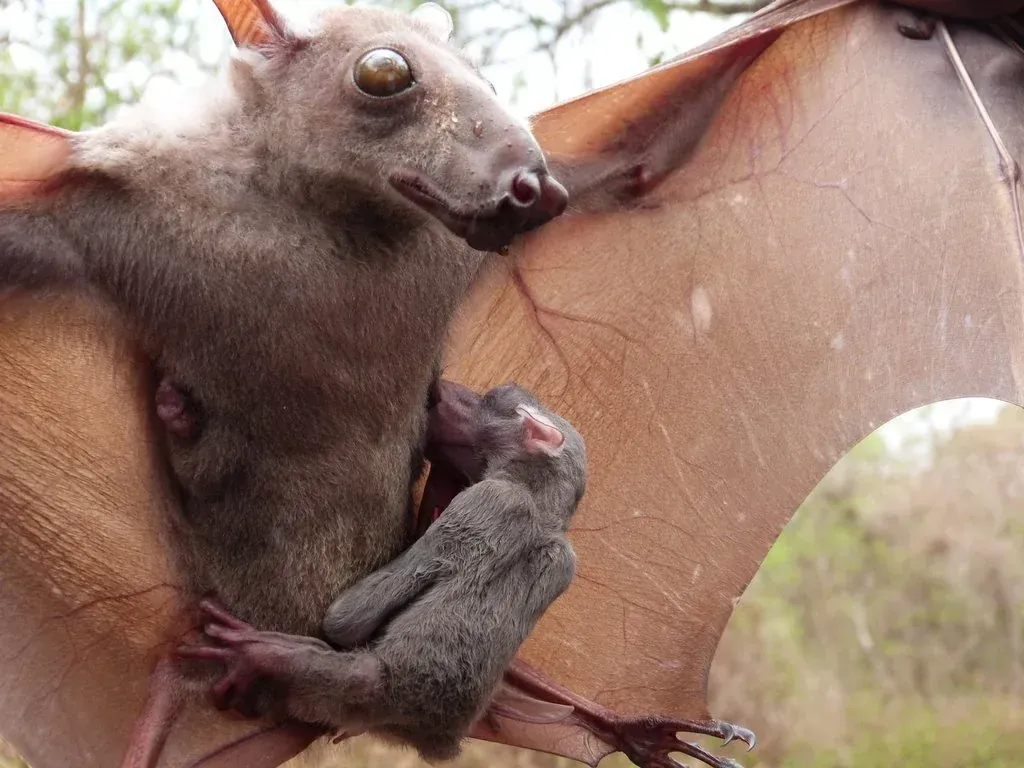
@remotectrl/reddit.com
Found in lowland forests and swamps, this fruit bat roosts in trees and feeds on figs, mangoes, and other fruits, playing a key role in seed dispersal. Its wingspan reaches nearly 1 meter, yet it’s the head that defines it, making males look markedly different from the smaller, more typical-looking females. Nocturnal and social, they gather in leks to compete for mates.
Glass Frog
Glass frogs are a group of amphibians known for their translucent abdomens, which allow their internal organs to be seen through their skin. These fascinating creatures are found in the tropical forests of Central and South America, where they use their camouflage to blend in with their surroundings and avoid predators.
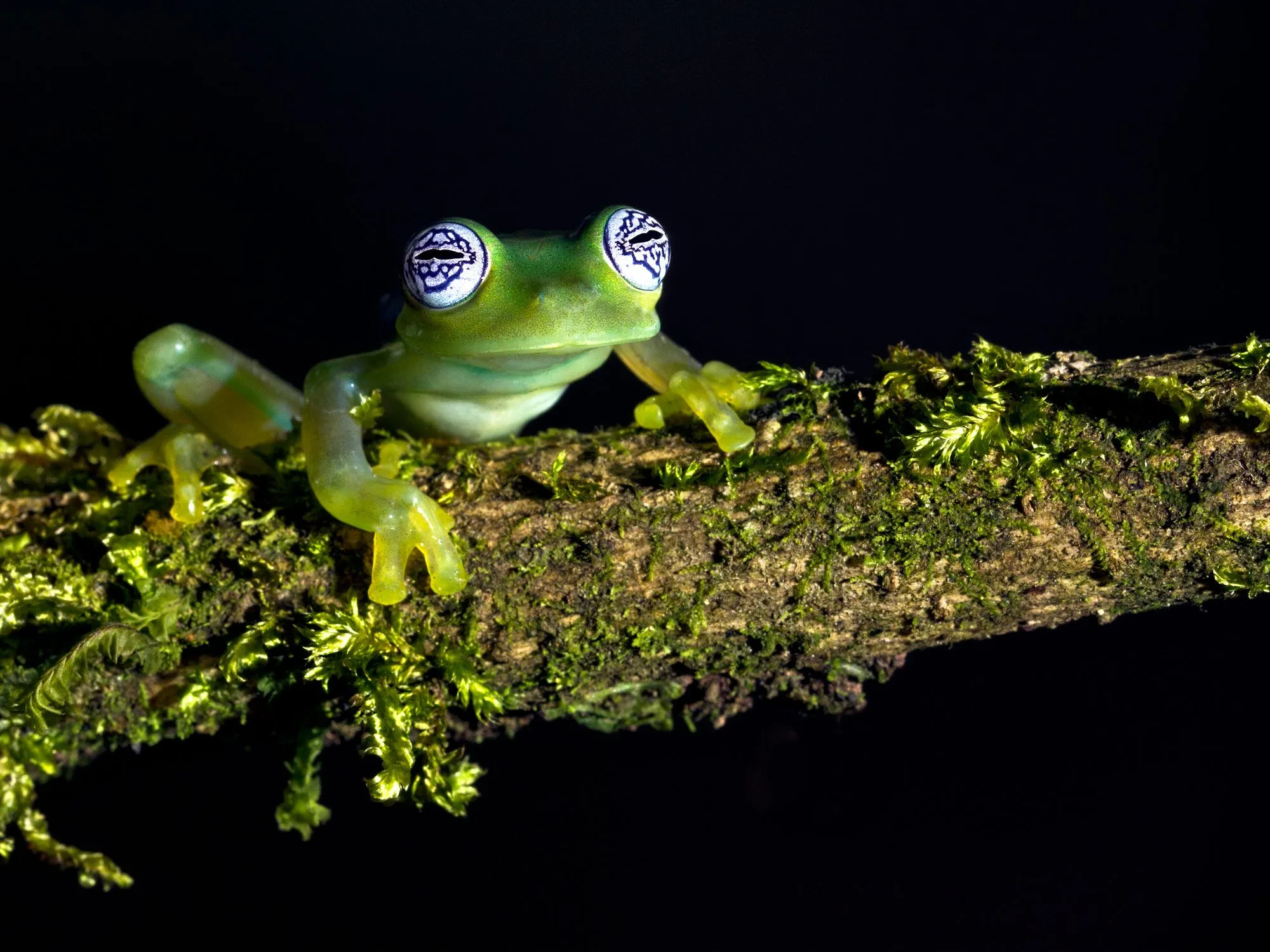
@cantfeelmylegs/reddit.com
Glass frogs are also known for their distinctive mating calls, which can be heard echoing through the forest at night. Despite their delicate appearance, glass frogs are resilient and adaptable, thriving in a variety of habitats across the region.
Galapagos Tortoise
The Galapagos Tortoise, a venerable resident of the eponymous islands, truly embodies the essence of a living relic. These colossal reptiles, with their weathered, almost stone-like shells, evoke a sense of deep time, their slow, deliberate movements a testament to their longevity.
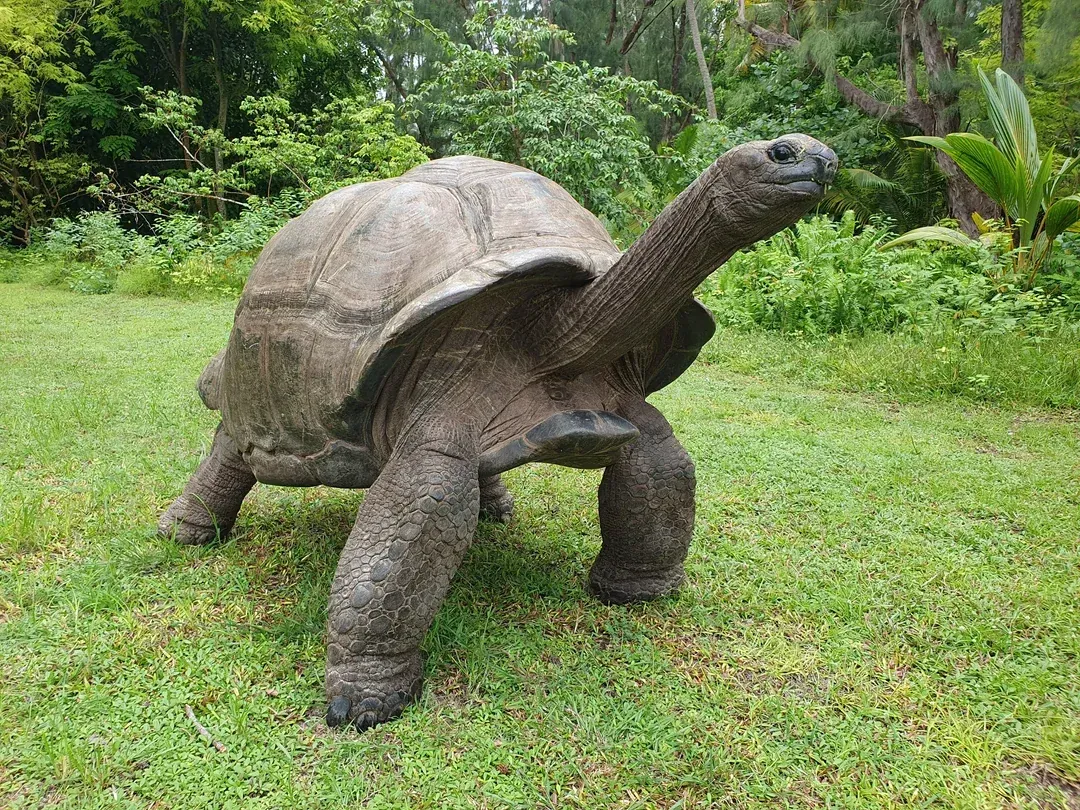
@iotaseychelles/reddit.com
Their shells, varying from high-domed in humid highlands to saddle-backed in drier lowlands, directly reflect their evolutionary adaptations to specific island niches. These gentle giants can weigh over 500 pounds and live past a century. Their crucial role as seed dispersers helps maintain the ecological balance of the Galápagos.
Quokka
Often referred to as “the happiest animal in the world,” the Quokka is a small marsupial from Australia that looks like it’s always smiling. This nocturnal creature has a round body, short tail, and a face that seems to constantly exude joy. Known for being curious and friendly, the Quokka is often found hopping around in groups and interacting with humans.
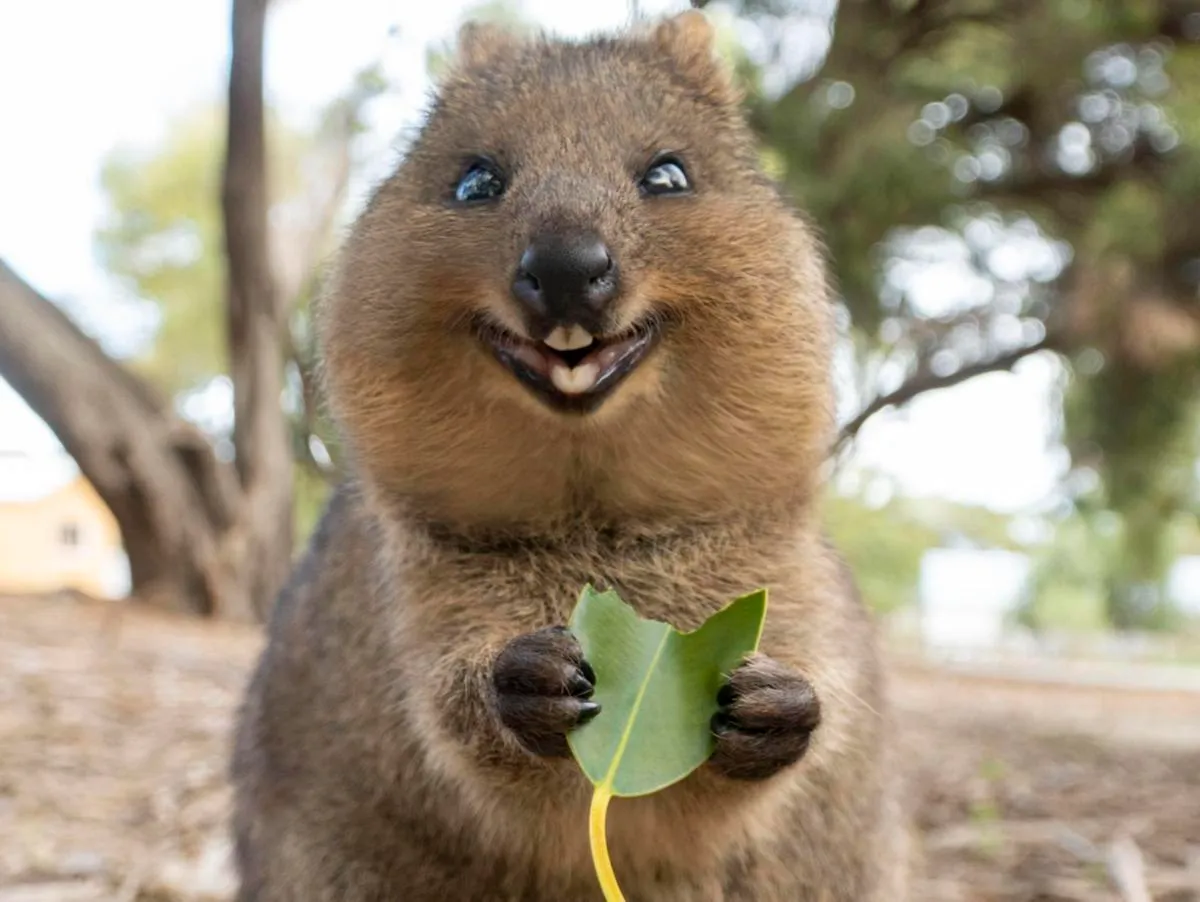
@Effortless0/reddit.com
Its adorable appearance and carefree attitude have made it a social media sensation, with countless photos of people posing with these seemingly cheerful creatures. Despite their cuteness, Quokkas are wild animals with a unique and endearing charm.
Tarsier
The Tarsier is a tiny primate with huge, wide eyes that give it an otherworldly appearance. Native to Southeast Asia, these nocturnal creatures rely heavily on their extraordinary sense of hearing, with ears that are larger than their brains. Their eyes are fixed in their sockets, meaning they have to rotate their heads 180 degrees to see, adding to their eerie, wide-eyed look.
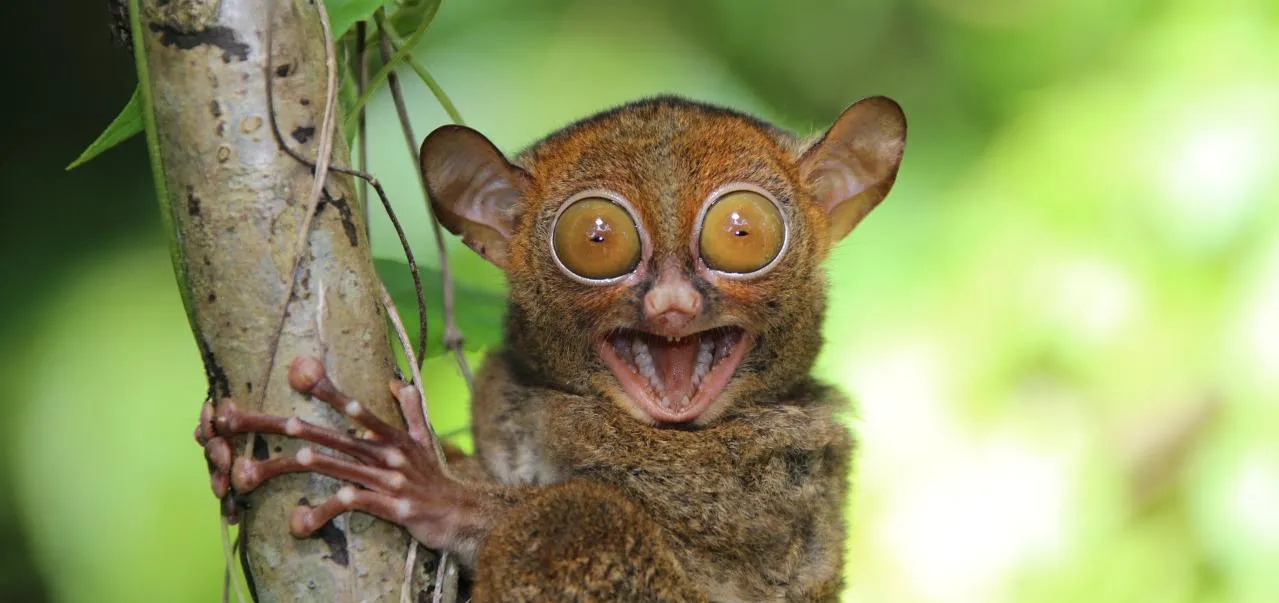
@nkbooat/reddit.com
Despite their small size, Tarsiers are fierce hunters, preying on insects, birds, and small mammals. Their intense gaze and bizarre, almost puppet-like movements make them one of the strangest creatures to ever swing through the night.
Flying Dragon
The Flying Dragon, also known as Draco Lizard, is a bizarre little reptile that looks like a creature from a science fiction movie. This lizard has an impressive ability to glide through the air by extending flaps of skin along its ribs. It uses this ability to escape predators and hunt for food in the treetops.
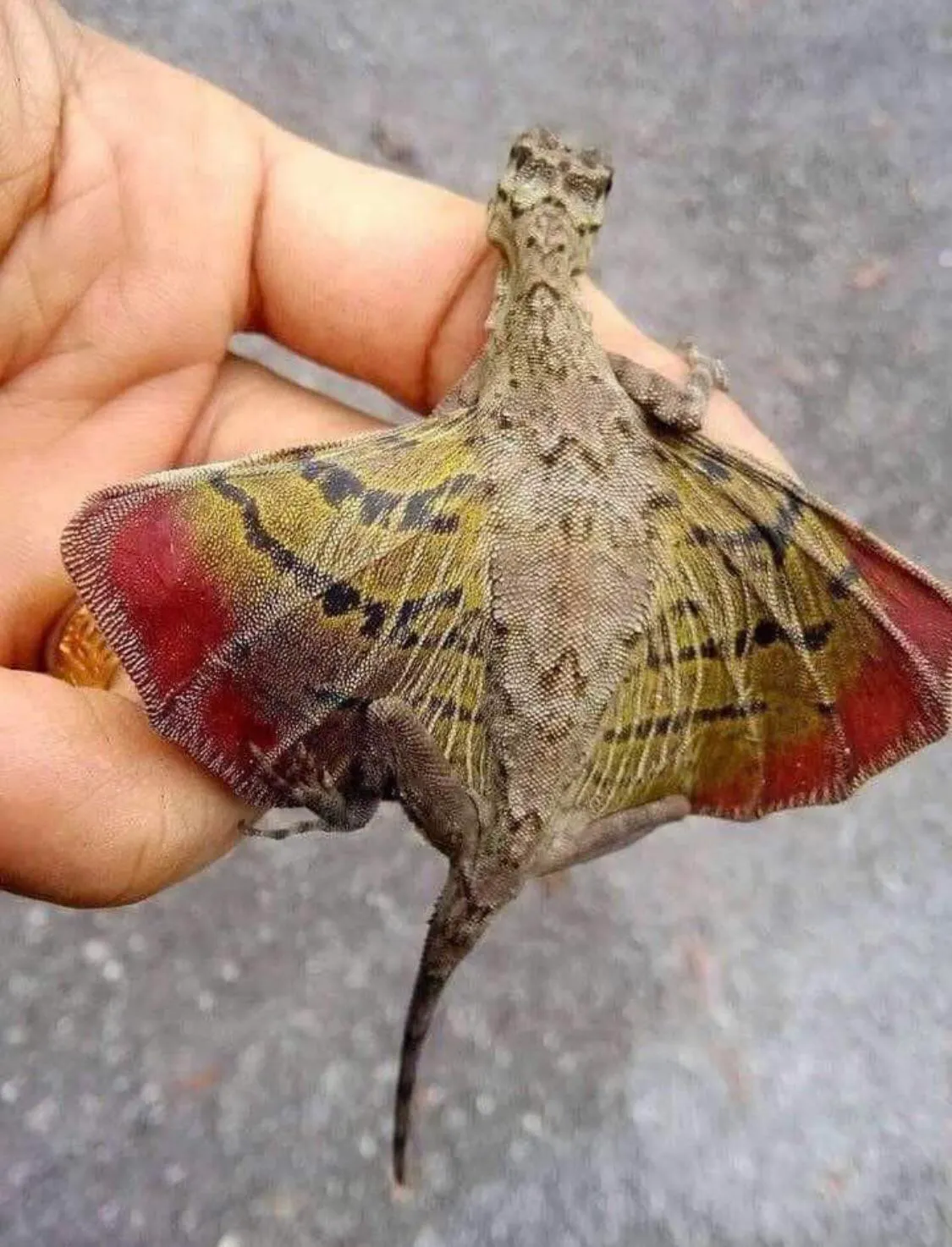
@HereIsNoukster/reddit.com
Its dragon-like appearance is enhanced by its long, wing-like flaps and a vibrant dewlap (a colorful throat flap) that it extends during mating displays. They are masters of camouflage, blending seamlessly into the bark of trees, making them nearly invisible to both predators and prey.
Aardvark
The Aardvark is a creature that looks like it was designed by an artist with a wild imagination. With its long, tubular snout, large ears, and rabbit-like body, it’s a one-of-a-kind mammal. The Aardvark spends most of its life digging for ants and termites, its primary food source, using its powerful claws and strong sense of smell.
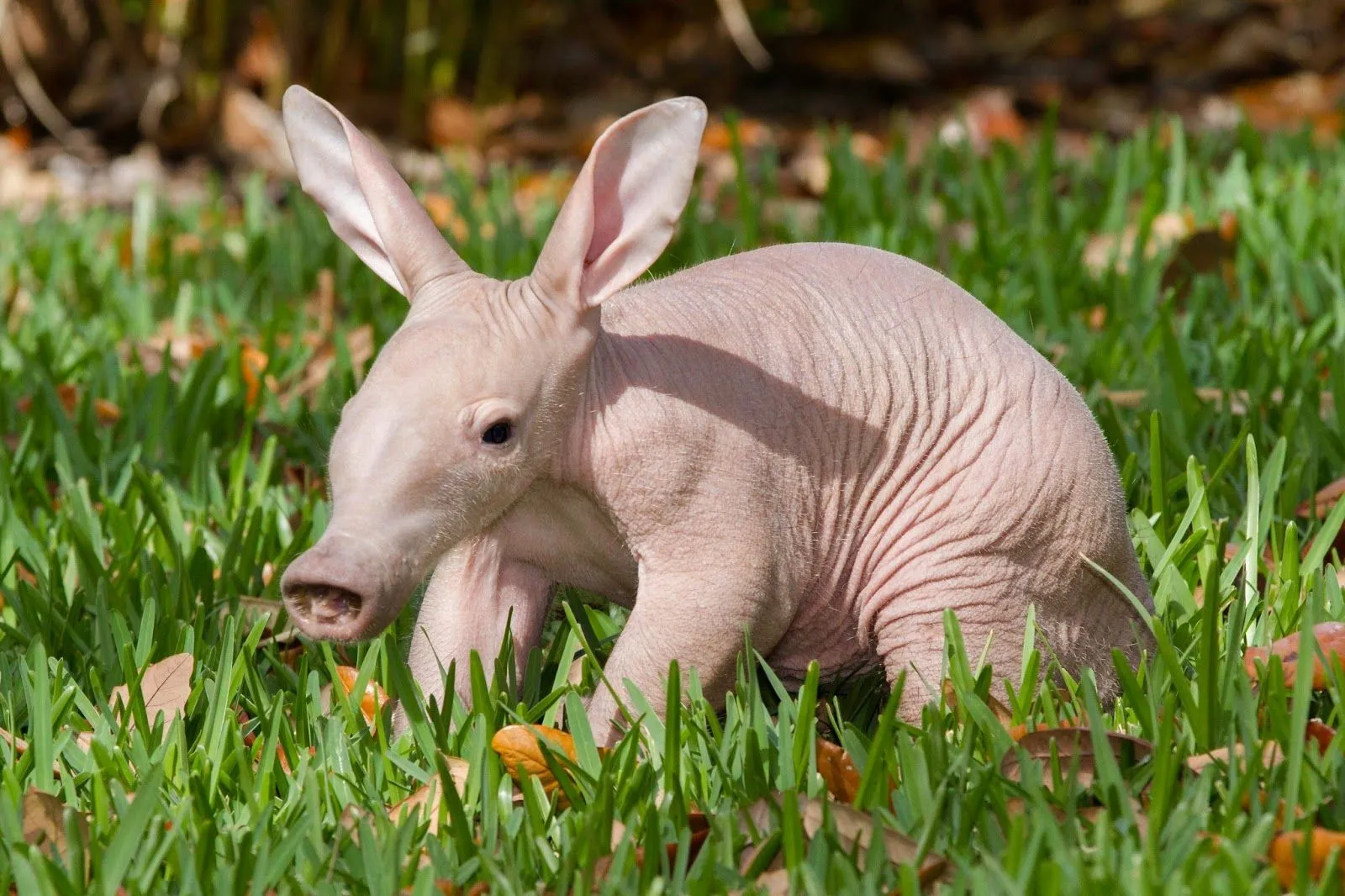
@remotectrl/reddit.com
Its thick skin protects it from insect bites and the occasional predator, while its long, sticky tongue is perfectly adapted for lapping up thousands of insects in a single feeding. The Aardvark plays a vital role in its ecosystem, as its burrows provide shelter for numerous other animals.
Gerenuk
With its impossibly long neck and delicate, gazelle-like body, the gerenuk looks like a strange mix of a giraffe and an antelope. Native to East Africa, this unique herbivore can stand on its hind legs to reach higher branches, making it look even more surreal.
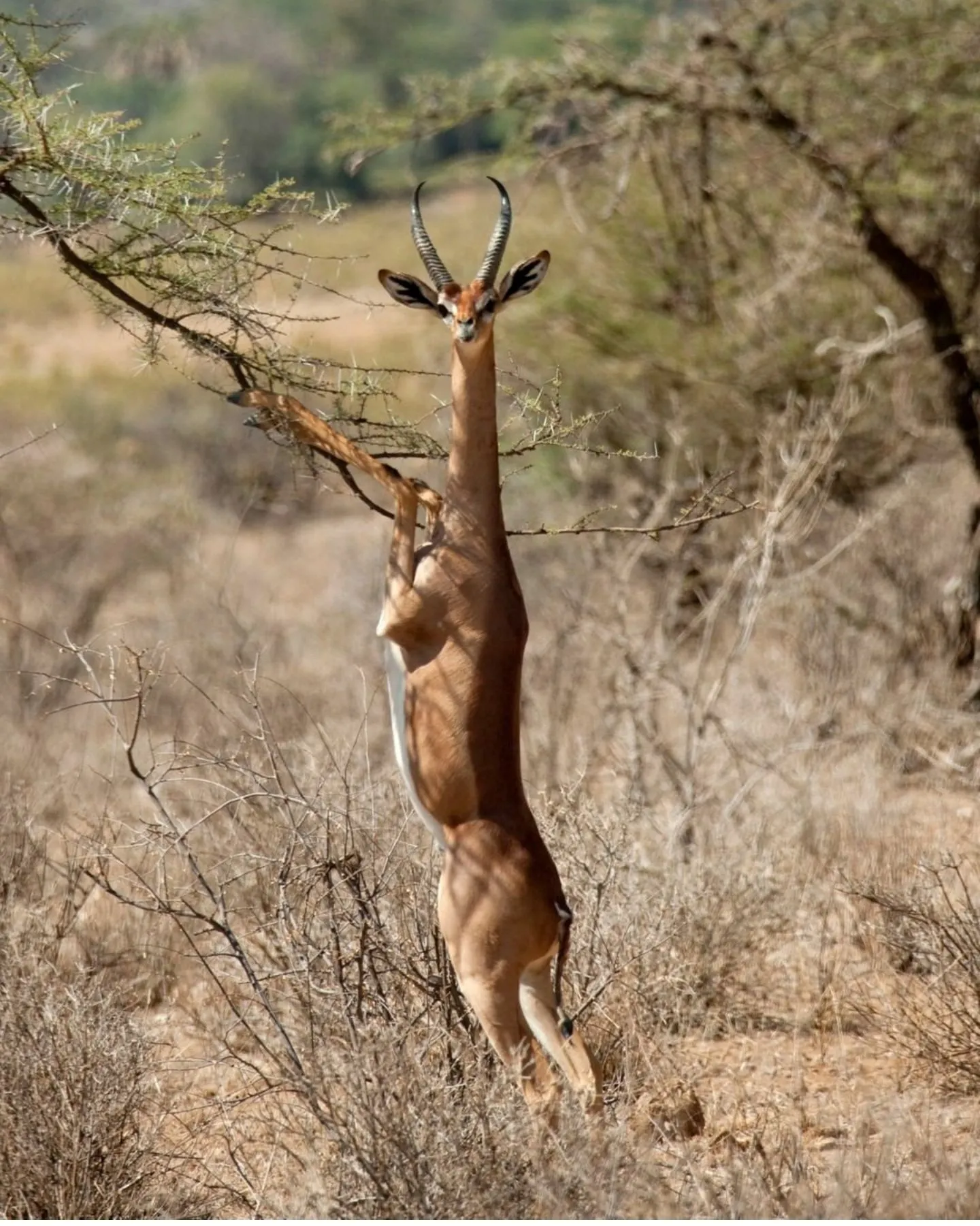
@bokin8/reddit.com
The gerenuk's large eyes and delicate face give it a distinctly fragile look. However, it’s an agile survivor in arid regions, requiring no direct water intake to thrive. It moves gracefully through the dry landscapes, blending in with the sparse vegetation. Its ability to browse at different heights allows it to avoid competition with other herbivores.
Babirusa
Also known as the "deer-pig," the babirusa is a wild pig species from Indonesia with some of the strangest tusks in the animal kingdom. The upper tusks of males grow upward, curve backward, and sometimes even pierce their skulls. These bizarre teeth make it look prehistoric, and their function is still debated.
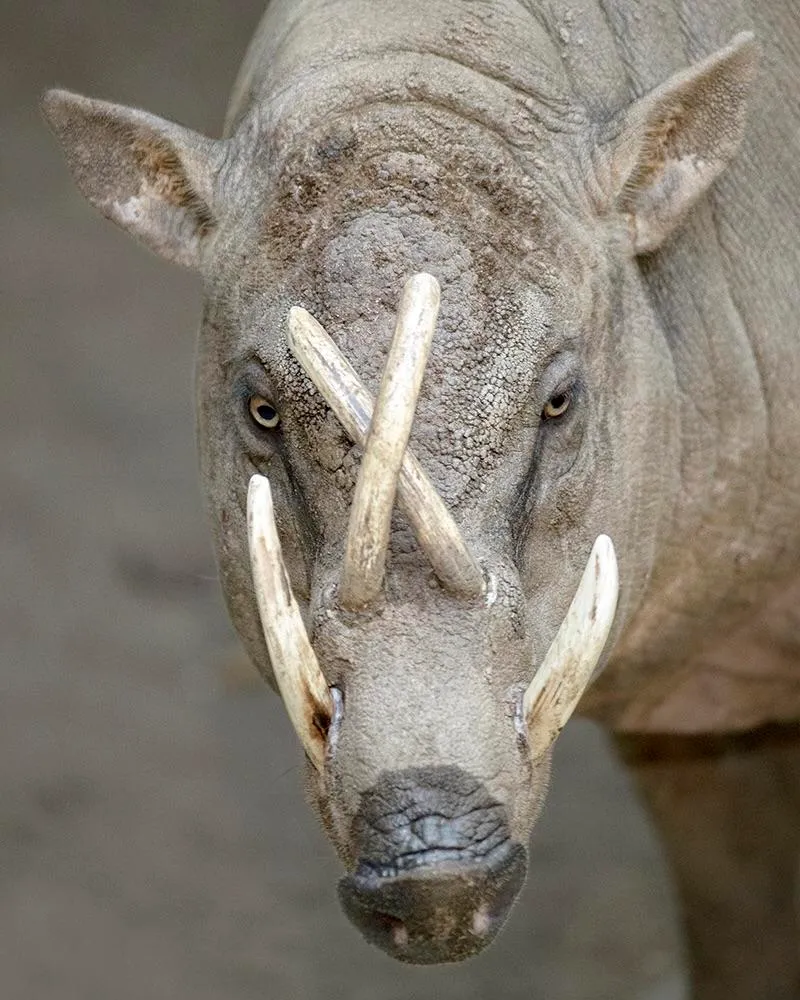
@Squirty-Buns/reddit.com
Some scientists believe they’re used for fighting, while others think they may be a display to attract mates. Babirusas are incredibly fast runners, which helps them evade predators in dense forests. Their semi-aquatic nature allows them to thrive in swampy areas where few other pigs can survive.
Malayan Tapir
Resembling a pig-elephant hybrid, the Malayan tapir is one of the most unusual-looking creatures in the animal kingdom. This large, herbivorous mammal is native to the dense tropical rainforests of Southeast Asia, where its striking black-and-white coloration helps it blend into the shadows and dappled light of the jungle.
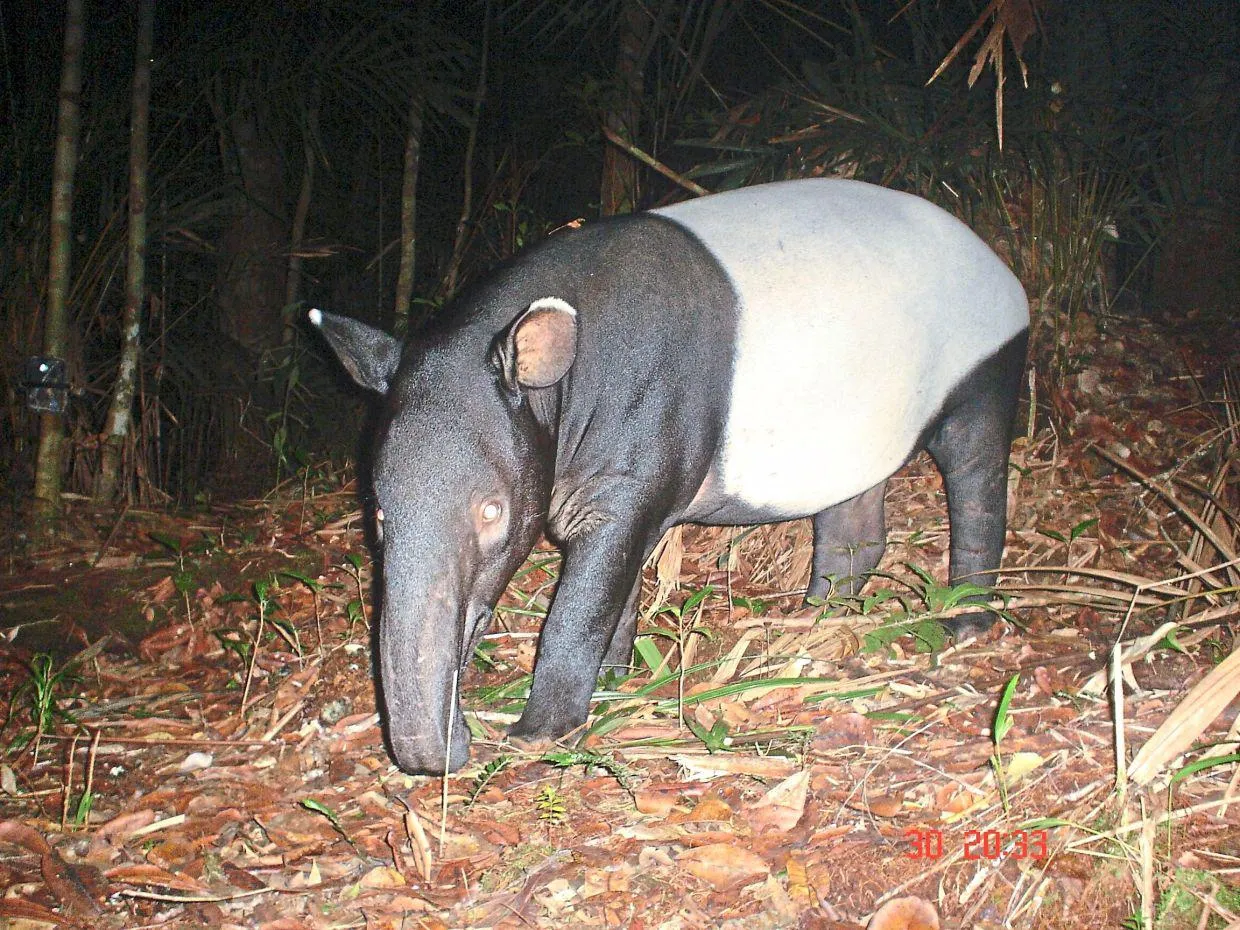
@bawledannephat/reddit.com
Despite their bulky size—adult tapirs can weigh up to 720 pounds—they are surprisingly agile swimmers, often seeking refuge in rivers and swamps when threatened. One of their most distinctive features is their prehensile snout, an elongated and flexible upper lip that functions almost like a miniature elephant trunk.
Velvet Ant
The Velvet Ant, despite its name, is neither an ant nor velvety. It's a wingless wasp, specifically the female of the Mutillidae family, and it's renowned for its incredibly painful sting. These insects, often sporting vibrant colors and dense, hair-like setae, resemble fuzzy ants, hence the misnomer. The males, conversely, possess wings and look more like traditional wasps.
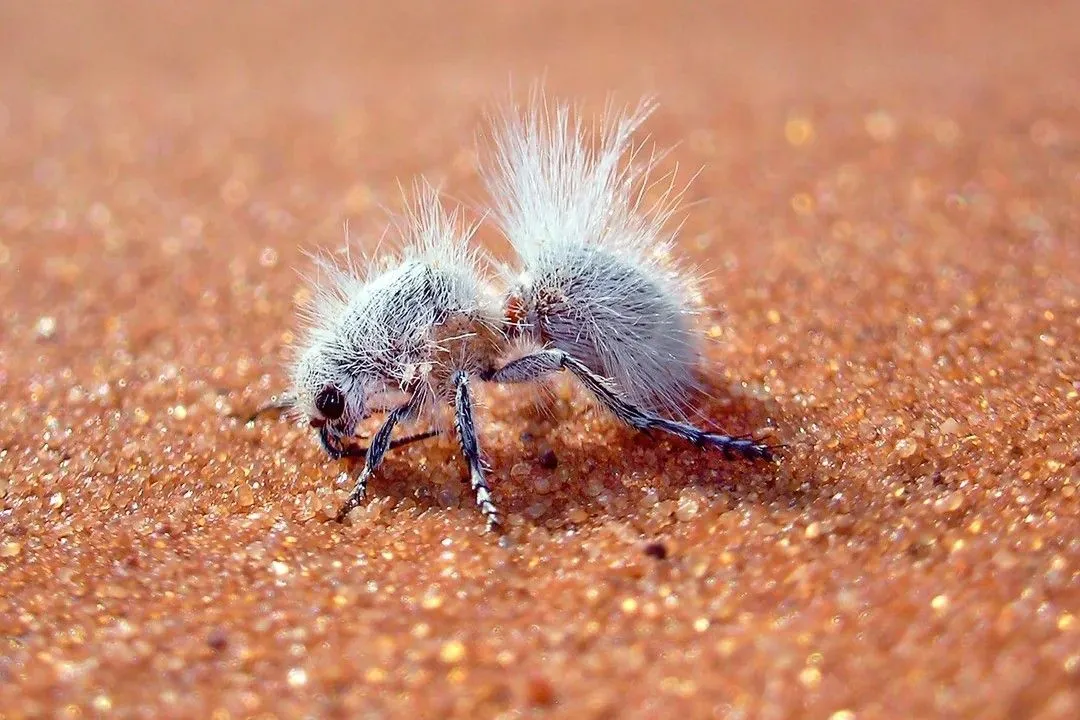
@_King_Crab_/reddit.com
Velvet Ants are parasitoids, laying their eggs in the nests of ground-dwelling bees and wasps. The larvae then consume the host's larvae or pupae, ensuring the next generation's survival. They are found worldwide, particularly in arid regions, and their robust exoskeletons provide them with significant protection.
Bilby
Resembling a rabbit-kangaroo hybrid, the bilby is an Australian marsupial with oversized ears, a long, delicate snout, and silky fur. This nocturnal creature is well-adapted to the arid deserts of Australia, where it digs complex burrows to escape the harsh heat of the day.
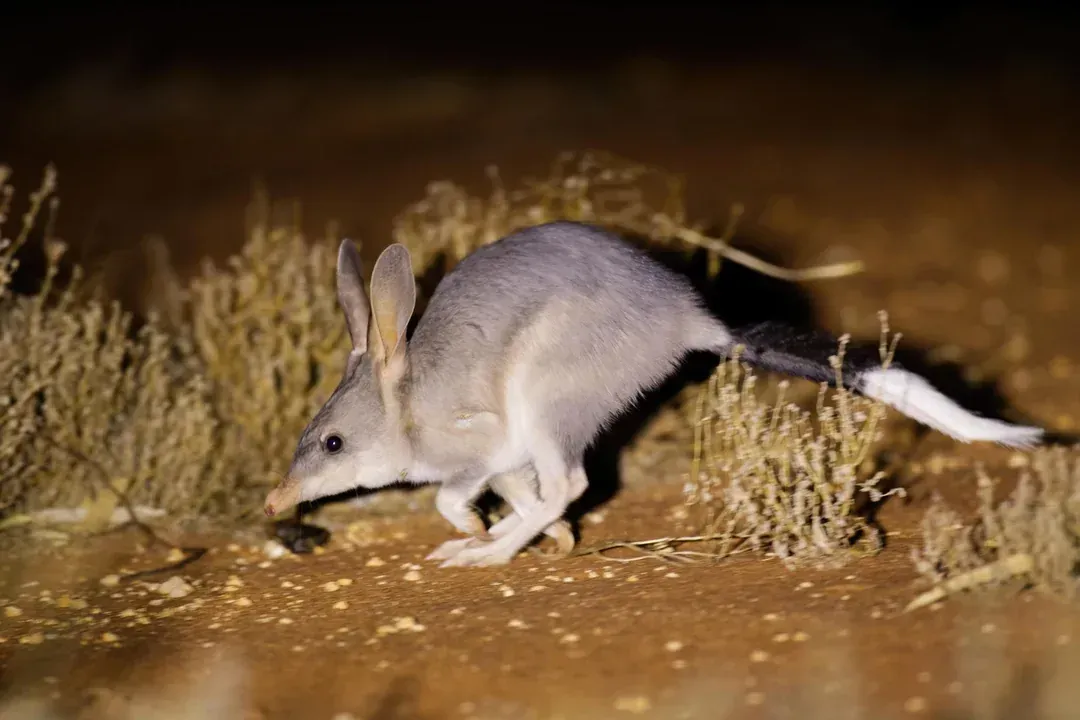
@Subject-Phase-3867/reddit.com
Its large ears serve a dual purpose: they provide excellent hearing, helping the bilby detect predators, and they help dissipate heat to keep the animal cool. Unlike rabbits, bilbies do not drink water directly; they obtain all necessary moisture from their food. Unfortunately, due to habitat destruction, bilby populations have declined significantly, making them an endangered species.
Emerald Cockroach Wasp
The Emerald Cockroach Wasp, *Ampulex compressa*, is a master manipulator, a creature that turns the formidable cockroach into a docile, walking incubator. First, it delivers a paralyzing sting to the cockroach's thorax, rendering its front legs temporarily immobile. Then it injects a cocktail of neurotoxins into the cockroach's brain, disabling its escape reflexes.
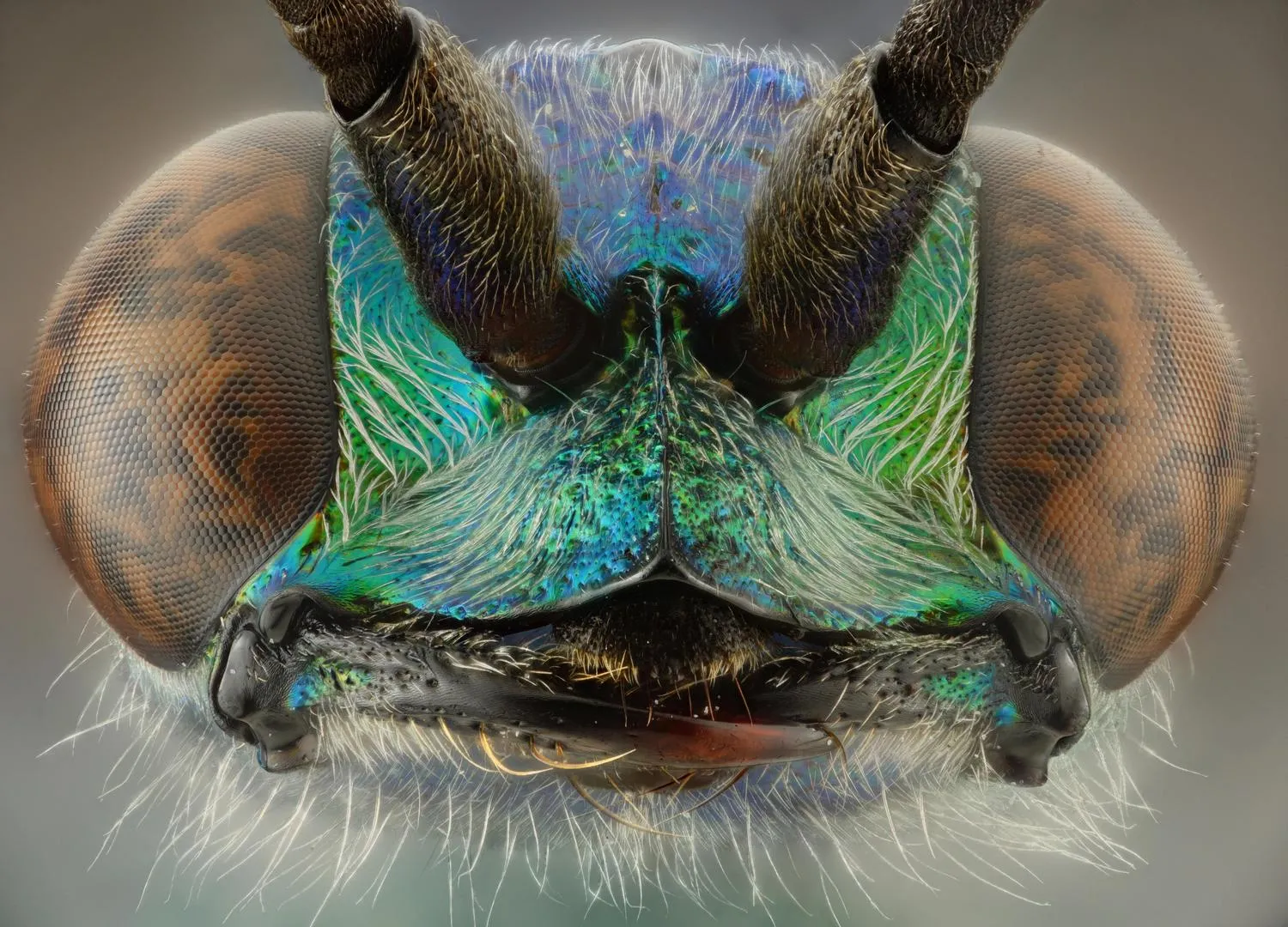
@Abraxas81/reddit.com
The wasp then leads the cockroach, by its antennae, to a prepared burrow and lays an egg on the cockroach's abdomen. When the egg hatches, the larva burrows into the cockroach, feeding on its internal organs while keeping it alive. This ensures a fresh food source until the larva pupates and emerges as an adult wasp.